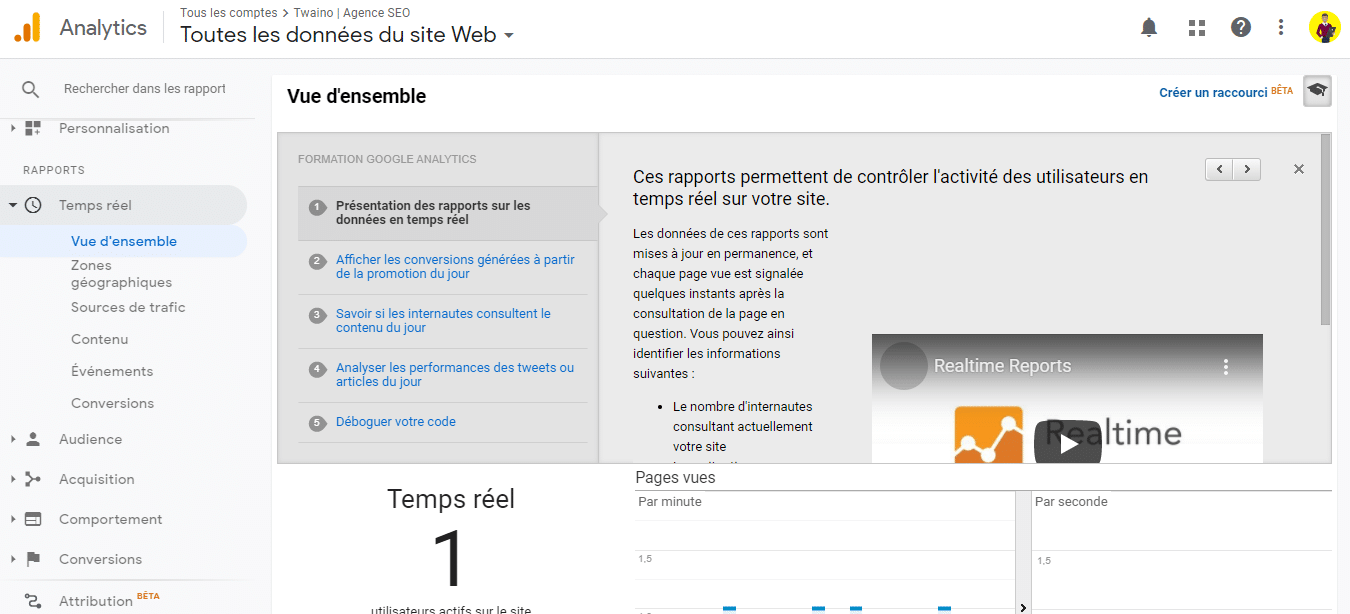Whether your ambition is to attract new visitors or make more sales, the implementation of an SEO is necessary for your website.
This is especially true when you learn that 75% of internet users never make it past the first page of search engines or that search engines drive 300% more traffic to sites than social networks.
But beyond the implementation of any optimization strategy, the real headache lies in the monitoring and evaluation of this strategy.

Indeed, what would be the point of carrying out actions if you do not have the possibility of monitoring their impacts?
This question is already no longer important since there are a multitude of key performance indicators (KPIs) that will help you evaluate the effectiveness of the actions you take in the context of optimizing your site for the search engine.
It is precisely these indicators that I will talk about in this article, I will not forget to discuss the tools that will allow you to measure them and to discuss good practices concerning them.
Chapter 1: What is an SEO KPI?
In this first chapter, I explain what is meant by SEO KPI and why it is important to use it.
1.1. How to define a KPI?
The KPI (Key Performance Indicator) designate in French the key performance indicators. It is a set of quantifiable and measurable elements whose role is to provide you with data whose use will allow you to:
- Analyze or evaluate a strategy;
- To identify the weak and strong points of this strategy;
- And to make decisions in the direction of improving the strategy.
In the field of web referencing or SEO, it is a set of factors that helps you measure the performance of your actions.
In other words, these indicators will let you know if your search engine optimization technique is effective or not.
If SEO refers to actions taken to improve visibility, SEO performance refers to the high degree of accomplishment of these different tasks. And it is this level of achievement that you track through KPIs.
1.2. Why is it important to use KPIs for your SEO?
As I have already reminded you, SEO KPIs allow you to judge the effectiveness or otherwise of a website optimization strategy.
Concretely, these are the elements of analysis put in place to provide information on the performance of the various actions that are implemented to optimize a website.
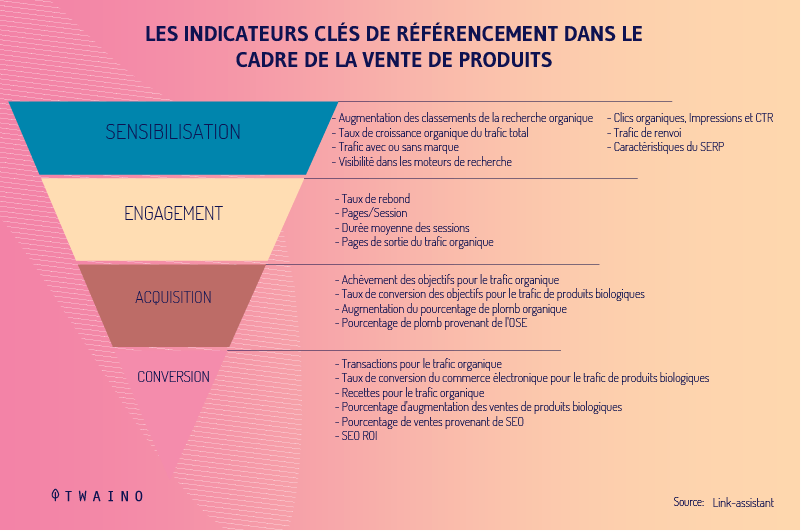
As a result, and thanks to the exploitation of the data that it is possible that you collect, you can know if the results that you obtain go in the direction of the objectives that you have previously defined.
Likewise, key performance indicators provide you with information and data that will allow you to not only monitor the different actions of your SEO strategy, but also to be informed about each of these actions throughout the process. optimization.
You will be able to understand and act quickly to remedy, for example, the problems that block the display of your site in the search results.
In view of the advantages that I have just listed regarding the use of SEO KPIs, it is clear that not using them will in no way benefit you.
In reality, when you do not use SEO KPIs:
- You no longer have any benchmarks regarding the optimization of your site;
- You don’t know if your optimization strategy is working or not;
- You can no longer identify the reasons why you are not achieving the goals you set for yourself.
Basically, when you’re not using KPIs, you’re sight-seeing and as you know sight-seeing will lead to your digital decline sooner or later.

Source : Freepik
Now that you know what a KPI is and why it’s important to use it, let me teach you how to choose a good SEO KPI.
1.3. How to choose a good key performance indicator?
Before seeing how to choose a KPI, first discover the characteristics of a good KPI.
1.2.1. Characteristics of a good KPI
A good SEO KPI must have certain characteristics. The right KPI must be:
- Clear: Define your performance indicator in such a way that it does not admit any innuendo. That is to say that it is easily understood. This will allow you to collect accurate data. Because a KPI that is not clear can give rise to misinterpretations or exploitation.
- Relevant: The key performance indicator that you are going to seek to define must be based on sound reasoning. You must be able to tie it to an objective or compare it with elements of your strategy.
- Actionable: The KPI indicator you choose must correspond to an element of your SEO strategy on which you can easily act. For example, when the data collected through KPIs informs you that your strategy is not working well, they must be able to clearly indicate to you the level where the problem to be solved is.
- Controllable: The KPI indicator must concern elements that you have the possibility of monitoring or influencing.
So:
1.2.2. How to choose a good KPI?
Knowing the characteristics that a KPI must have is not necessarily enough to choose good KPIs.
Before choosing a KPI, you must first ask yourself certain questions, but also:
- Define your objectives: In the same way that your SEO strategy is guided, among other things, by increasing the visibility of your site, your KPIs must be associated to a goal. For example, if you would like visitors to spend a lot of time on your website, you must choose a KPI that will allow you to measure the achievement of this objective.
- Consider the structure of your site: It is also important to remember that the choice of KPI will depend on the structure of your site. If your site has only one page, you will not need to set a goal centered on the bounce rate for example. On the other hand, if it is an e-commerce site or a site that has several pages, the bounce rate may be useful to you.
- Choose useful KPIs and avoid having too many of them: Before defining a key performance indicator for your strategy, you must check that it is necessary for the achievement of your objectives. So you don’t have to choose just any indicator.
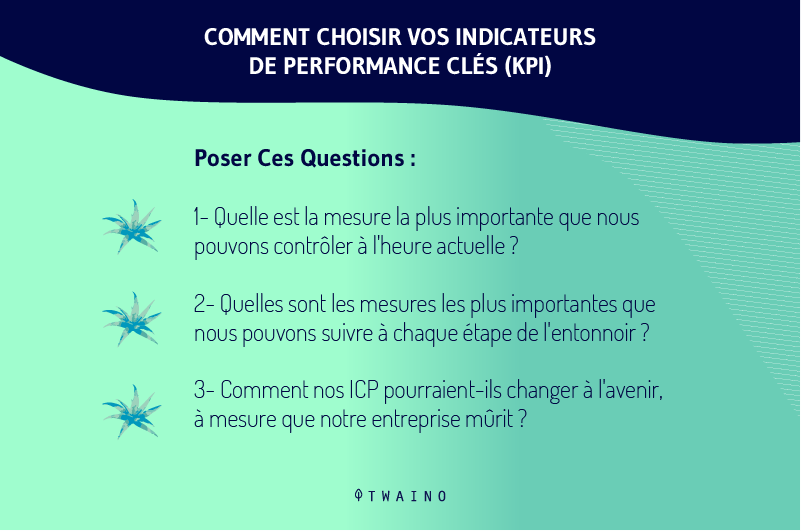
Also, you should limit the number of indicators. Because too many indicators can lead to a large volume of data that will be difficult for you to analyze.
Still on the subject of the number of KPIs, staceybarr recommends that you define three priority objectives and associate three KPIs at most to each of them.
Now that you know everything about SEO KPIs, here are several examples of SEO KPIs.
Chapter 2: How to measure the different types of SEO KPIs?
In this chapter, I look at the different SEO KPIs and the different ways in which they should be measured.
2.1. The different types of KPIs for SEO
The different stages of a search engine optimization strategy can be likened to the major actions undertaken as part of setting up a sales funnel.

So I can rank most SEO KPIs following the sales funnel model. According to this idea, you have:
SEO KPIs for your site’s audience: These are the key performance indicators that allow you to collect data about your site’s audience.
In this category, you have for example:
- Traffic sources;
- Monitoring your SEO positioning;
- The organic click rate;
- Etc.
SEO KPIs for engagement: These SEO KPIs allow you to measure the performance of your calls to action. The SEO KPIs of commitments are among others:
- The bounce rate;
- The number of page views;
- The average duration of a session;
- The output page rate;
- The scroll depth;
- Etc.
SEO KPIs for acquisition: KPIs for acquisition allow you to collect data on Internet users who have performed the actions you expect them to do. The incoming KPIs in this category are:
- Conversion rate;
- Leads generated;
- Etc.
SEO KPIs for conversion: The key performance indicators that fall into this category allow you to measure whether the efforts made to achieve a certain objective are paying off. Among these KPIs, you have:
- ROI for SEO;
- The growth ;
- Etc.

Let’s see how you can measure them:
2.2. How to measure the different SEO KPIs?
2.2.1. Sources of Traffic
This KPI Indicator informs you about the origin of visitors to your site. It also provides you for each source, the percentage share of traffic generated.
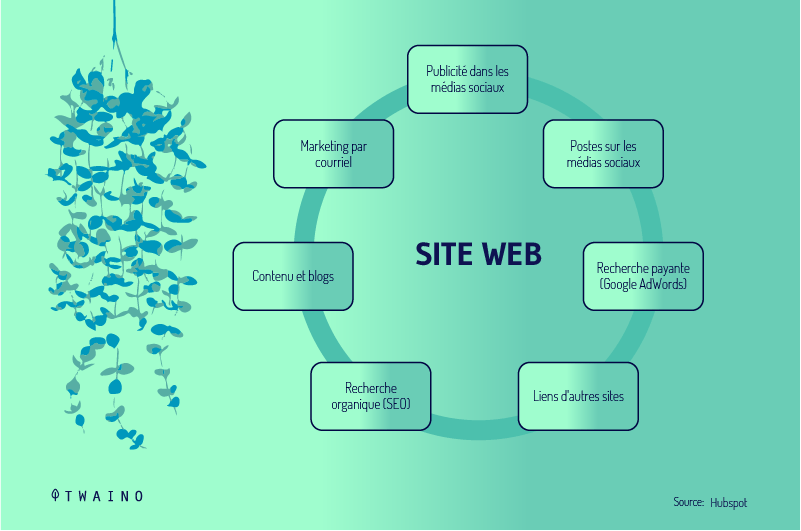
In terms of traffic sources, you can have:
- Direct traffic: These are users who access your site by entering the URL address directly in their navigation bar;
- The traffic generated by search engines or organic traffic which refers to all Internet users who have visited your website from a search engine. These are actually Internet users who have visited your site by clicking on the link displayed by search engines (Google, bing, yahoo) in the results following a search they have carried out;
- Traffic from referral sites: As the name suggests, these are users who came to your site through other sites;
- Traffic generated through campaigns: Allows you to track the number of visits you have generated through paid advertising, purchased or unpurchased keywords.
To find traffic sources in Google Analytics:
- Go to the “Acquisition” tab;
- Select “All traffic”;
- And choose “channels“.

Analyzing traffic source data will allow you to compare different traffic sources for your website. This will help you determine if your SEO strategy is doing well and compare it to other traffic sources.
Thanks to this key indicator, you will also know the number of visitors you get thanks to your SEO strategy. Thus, if the number of visitors is high, this will mean that you are correctly applying the recommendations of natural referencing.
If you have low organic traffic, it probably means that your site is not showing up high in search results. You must therefore review your SEO policy.
Monitoring this SEO measure will allow you, among other things, to know the links for which you have obtained a lot of clicks and the keywords that promote a better display of your site.
To remedy regressive traffic, you can:
- Create content that people will seek to consult;
- Facilitate access to old content on your website;
- Update your content;
- Optimize your articles for the most used keywords in your industry.
2.2.3. The click-through rate (CTR)
This is the indicator that gives you the percentage of people who clicked on the link to your site after seeing it in the search results.
It is calculated by the ratio between: (the number of people who clicked on the link of your site and the number of people who saw your page in the search results) * 100.
For example, if 100 people have seen your site and that only 3 people clicked on your link the click rate will be equal to: (3/100) * 100 = 3%.
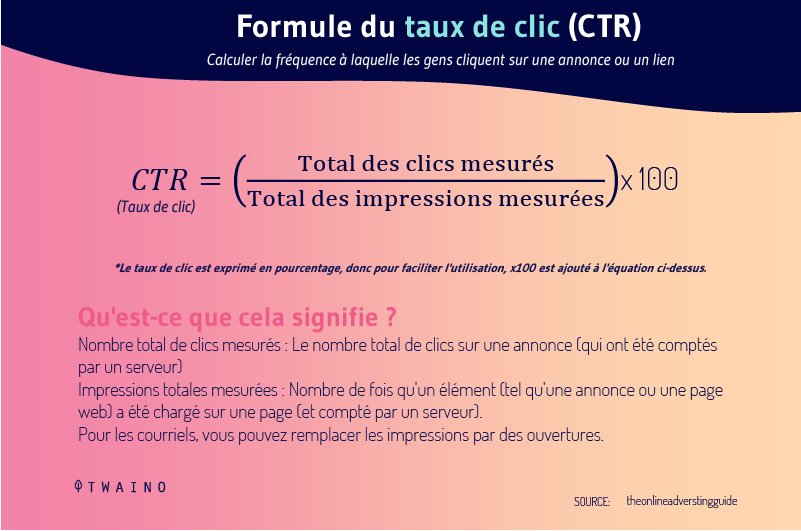
The click-through rate indicator allows you to measure the effectiveness of an advertisement or your online campaigns.
To find the click-through rate, you can use the statistics generated by your Google AdWords or Google Search Console. You can also view this data in Google Analytics when you link your Adwords and Google Search accounts.
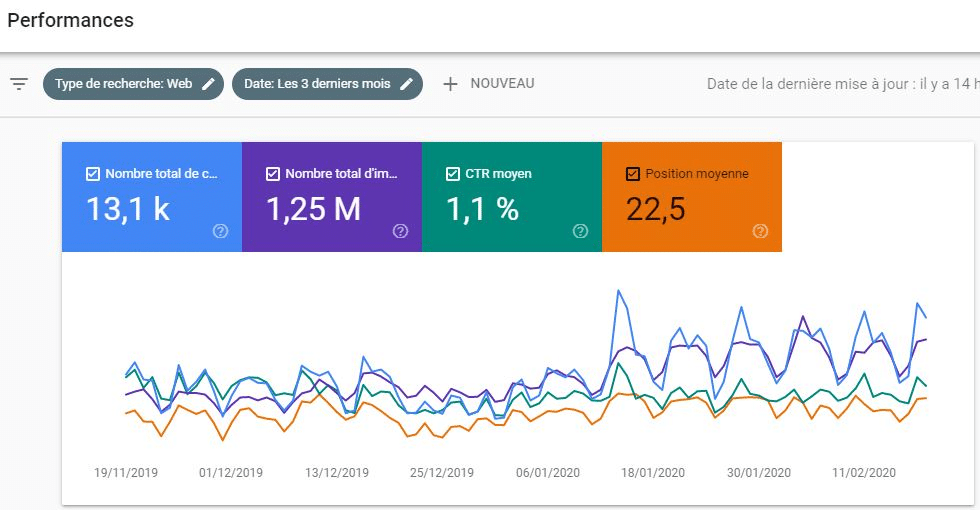
The click-through rate can be increased when you:
- Use quality keywords;
- Write catchy meta tags;
- titles catchy;
- Play on emotion in the construction of your titles.
2.2.3. Follow your positioning in search results (SERPs)
A web page is classified by keywords and this classification depends on what the Google algorithm considers relevant during a request.
The positioning of keywords indicates the position occupied by your site in the search results for a given query.
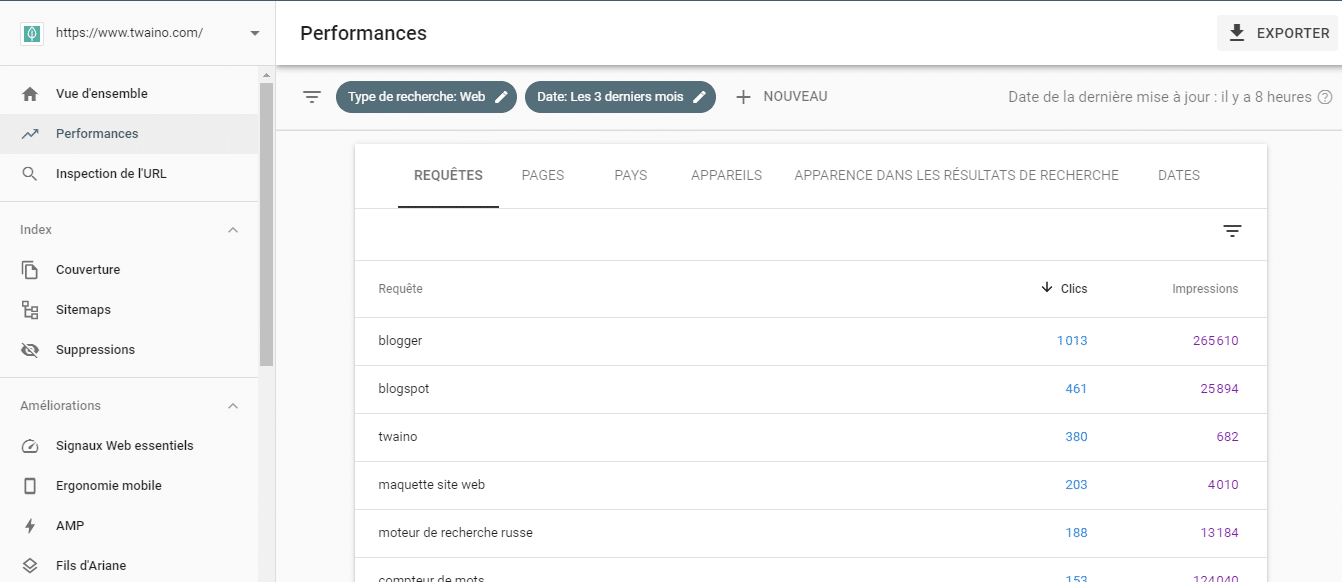
The positioning of your site is therefore determined on the basis of the keywords that you choose to optimize for the content that you create. It also depends on the popularity and quality of your content.
This ranking changes due to over 200 ranking factors :

You can view your position in search results using tools like Google Search Console. Each of these tools gives you a view of the keywords for which you appear in the SEPRs: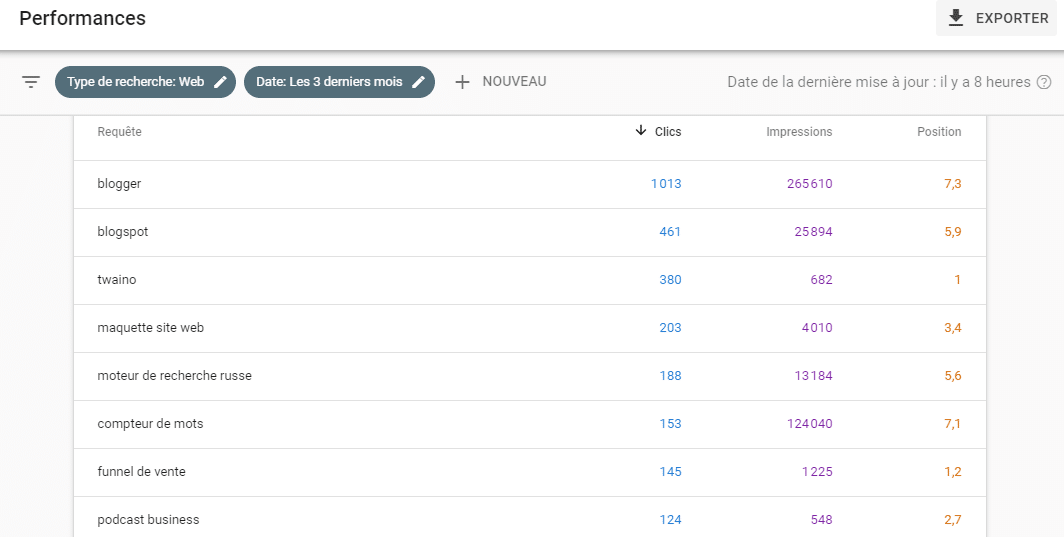
To take advantage of this indicator and thus improve your SEO, one solution would be to combine it with organic traffic, for example.
It will indeed be a question of seeing the traffic that each of your keywords generates and of optimizing your content more and more for the best ones that bring you the most traffic and keywords.
2.2.4. Bounce rate
This is an SEO indicator that allows you to know the number of people who are limited to visiting a single page on your website. In reality, there is a bounce when I come to your page and immediately leave it without having visited other page.

The bounce is counted each time you:
- Click on a link that sends you to an external site;
- Close the navigation tab;
- Type another URL in the address bar;
- Leave the session expired;
- Tap the Navigator back arrow.
This indicator can give you information on how interested Internet users are in the content you offer them.
It also indicates the quality of your site and constitutes proof of the good experience or not of the users.
Indeed, as in many areas, the more your site is interesting, well constructed and offers the information that the Internet user has come to seek, the more he spends enough time there and tries to see if he can do other discoveries.
Even if it is not taken into account by Google in the referencing criteria, the bounce rate can be used to evaluate the relevance of a site.
When your site has a high bounce rate, you need to take action because it could mean that your site has a problem.
According to wifeo.com, the acceptable bounce rate is between 40% and 60%. Indeed, if you are below 50%, everything is fine for you, but when this rate exceeds 50%, you must start by asking yourself questions.
However, it is useful to know that this measurement is to be taken with tweezers since it varies according to several parameters:
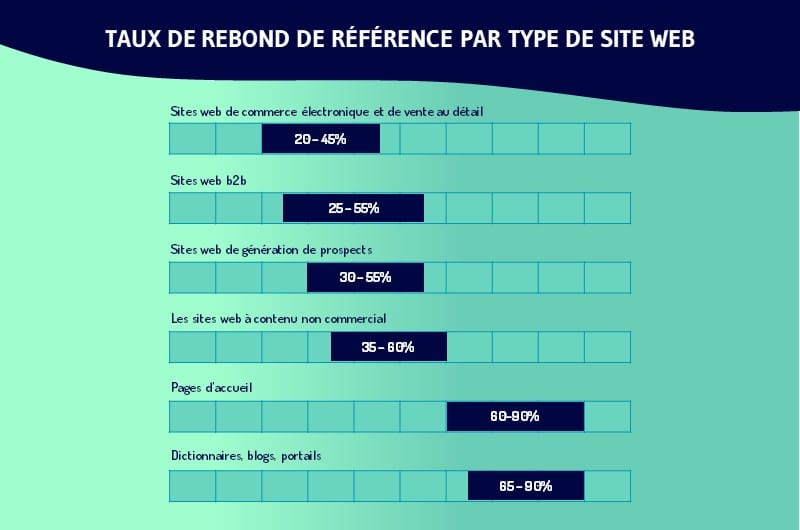
The bounce rate can come from several elements among which you have:
- The high loading time of your page;
- Posting content that is unrelated to your post title or meta description;
- The fact that the content of your website does not have real added value for the reader who is, so to speak, faced with a useless, erroneous or outdated publication;
- Poor quality and poorly optimized content: Publishing on the web requires compliance with certain rules when you flout them or use them incorrectly, the Internet user may be discouraged and interrupt his visit.
- Lots of advertising and pop-ups: Bombarding your website with elements that sometimes take up all the space and prevent the reader from reading or browsing the site can be embarrassing for them. So even if you have the best item or product, it can only leave.
You can find your site’s bounce rate with Google Analytics by going to:
- Audience => Overview;
- Behavior => overview;
- Or behavior => content => All pages
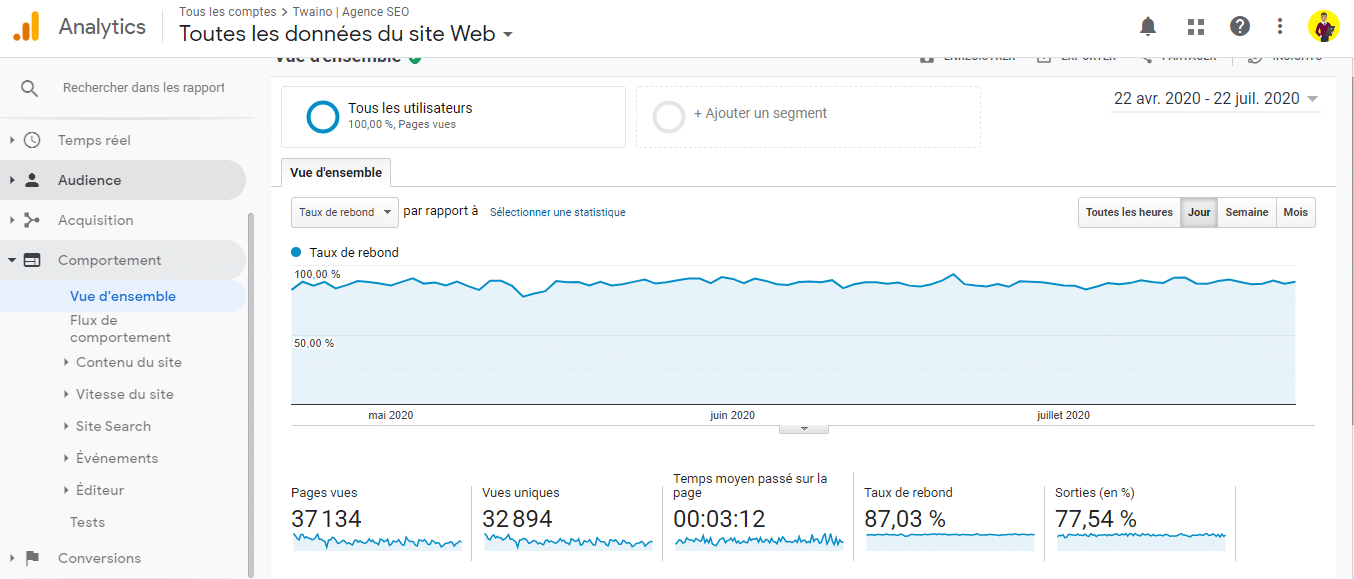
The high bounce rate can be reduced when you improve your site by:
- Tailoring your content effectively to your target audience;
- By publishing quality content supported by well-detailed information from reference articles;
- By making your content clear and more readable;
- By preventing your page from loading slowly;
- By optimizing your pop-up windows in such a way that it does not disturb your Internet users.
2.2.5. The average duration of visitors on your website
It can be defined as the time spent by an Internet user between the opening and closing of your site.
The average duration is determined by the ratio between the total durations spent by each Internet user on the site over the total number of visits.
For example, if two people visited your site today and spent 10 and 30 seconds respectively, the average duration will be equal to:
(10 +30)/2 = 40/2 = 20 seconds
According to databox, the average duration from a site is between 2 and 3 minutes. Indeed, only 10% of visitors reach a visit duration of between 4 and 5 minutes.
You can view the average duration of visits to your site in Google Analytics. Just go to the audience or behavior session and choose overview.

Among the reasons that can reduce the average duration of time spent on your site, I can cite:
- The poor design of your site;
- The slow loading time of your site;
- Lack of effective calls to action.
This measurement allows you not only to identify the best contents of your site, but also to establish the typical contents of your site. You will be able to publish knowing already what Internet users will appreciate.
You can increase the time spent on your site by:
- Providing your users with interesting content;
- Publishing content that captivates attention (good quality image, video);
- Optimizing the loading time of the pages of your site;
- Opting for an intuitive, responsive and user-friendly interface;
- Arranging your content according to eye tracking recommendations.
2.2.6. The exit rate of your page
The exit rate indicator of a page tells you from when Internet users leave your page.
Unlike the bounce rate, the exit rate tells you how many people are leaving your site to look elsewhere for their response. This is usually the last page someone visited before leaving a site.
The data collected through this indicator will allow you to improve the pages that have the most exit rates. To find the exit rate of your pages with Google Analytics:
- Go to the “behaviour” tab;
- Choose “site content”;
- And select “Exit Pages”.
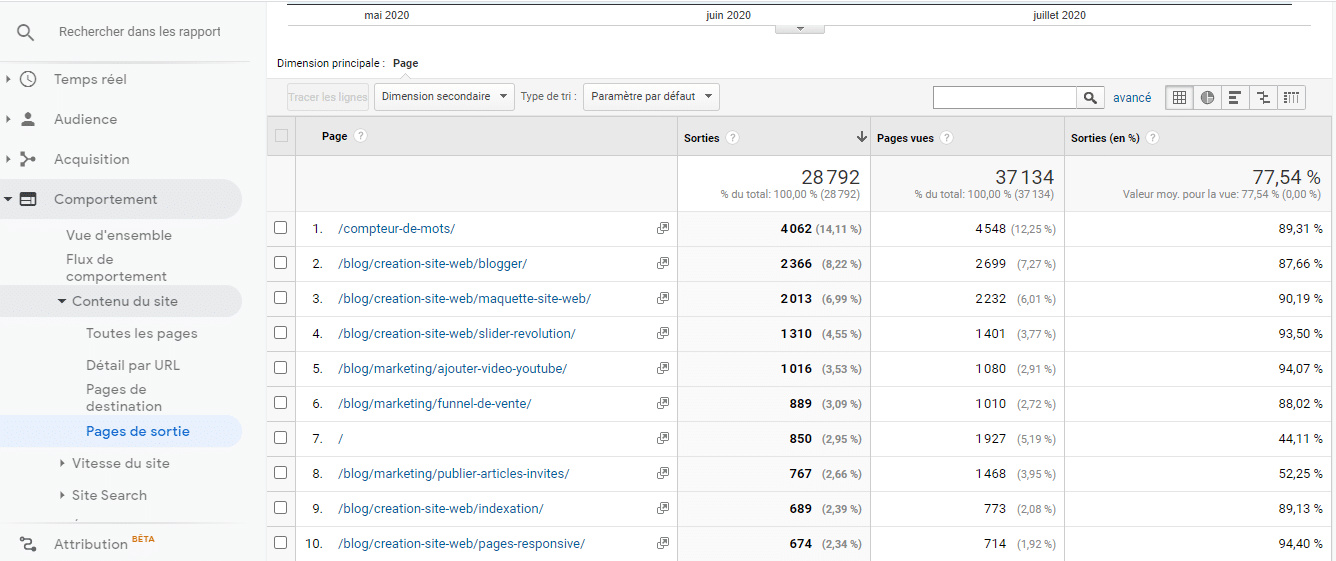
To improve your exit rates, you must start by working on:
- Your content;
- The transparency of your site;
- Browsing or searching on your site;
- The different processes of your site (payment, form, etc.).
2.2.7. The rate of leads generated
Lead generation is a technique that will allow you to capture the attention of visitors and obtain a means of contacting them. In short, it’s the strategy you put in place to turn visitors into potential customers.
As a metric of your SEO strategy, lead generation refers to the evaluation of the performance of your lead generation techniques.
So, if your site generates a lot of leads, it means that your strategy is working. On the other hand, if it decreases, this is equivalent to the ineffectiveness of your lead generation strategy.
To consult the data of this indicator in Google Analytics, you must:
Activate and configure the tool concerning the objectives;
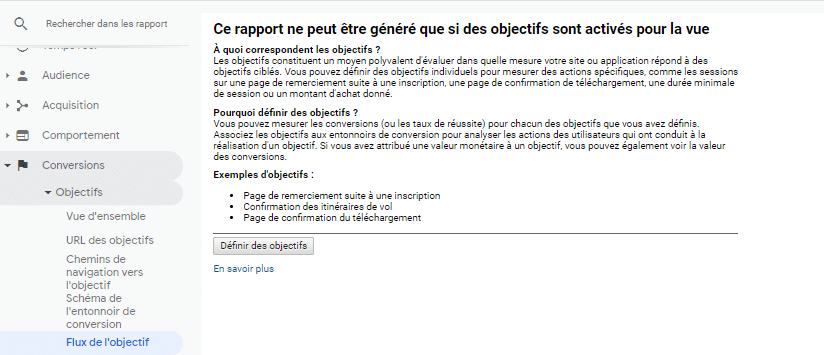
On a website, the decrease in leads generated may be due to the fact that:
- The site is not at all interesting: It is not just a question of collecting the email addresses of Internet users. When you create your site, you need to make the information on it interesting to readers so that they spend more time there.
- Site loading time: If your site is loading too slowly, then it may be the cause of the failure of your lead generation strategy.
- There is poor identification of the target audience: When you target people who do not fit your product, you are sure to fail in your lead generation strategy. In other words, poor targeting will cause very little or almost no lead generation.
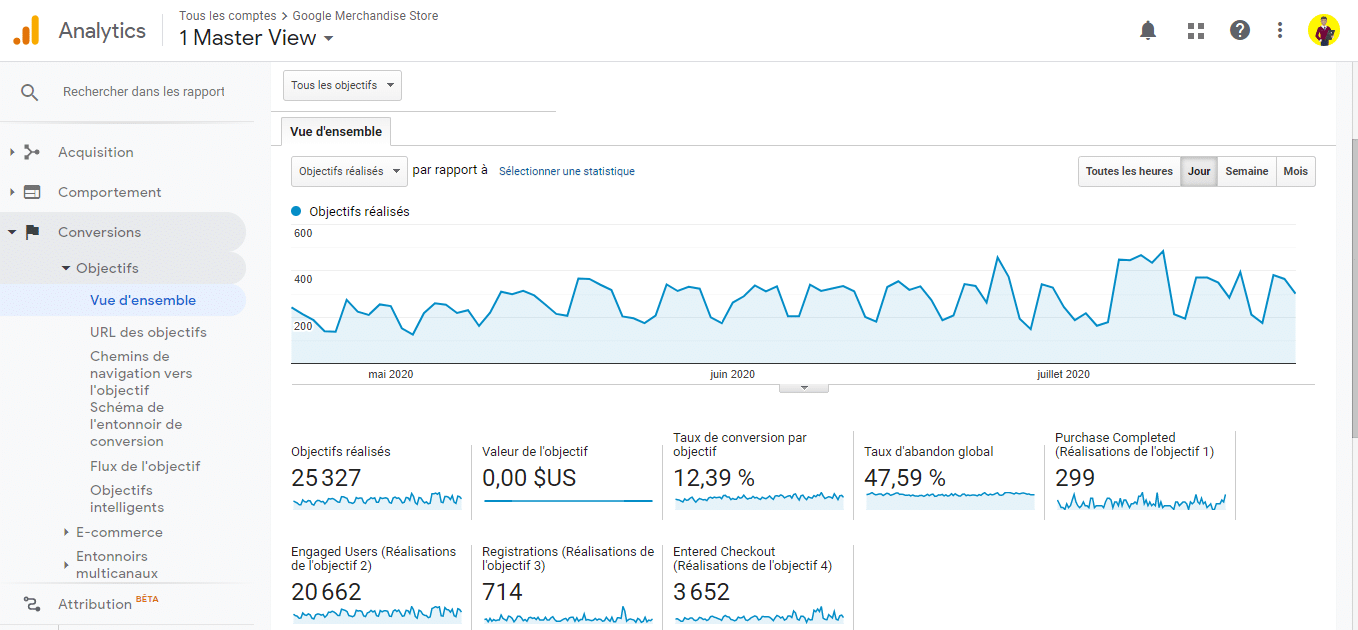
Whatever the cause, it’s important for you to know that leads depend on the growth of your website (especially if you have an e-commerce site and want to make money).
You can therefore try to solve this problem by:
- Offering something to your Internet users in exchange for their email address;
- Making sure that Internet users last longer on your website;
- Optimizing your site for search engines;
- Implementing clear and effective calls to action.
2.2.8. The conversion
rate The conversion rate is the indicator that will allow you to assess the persuasiveness of your website. The conversion may concern for example:
- The purchase;
- Signing up for a list or a form.
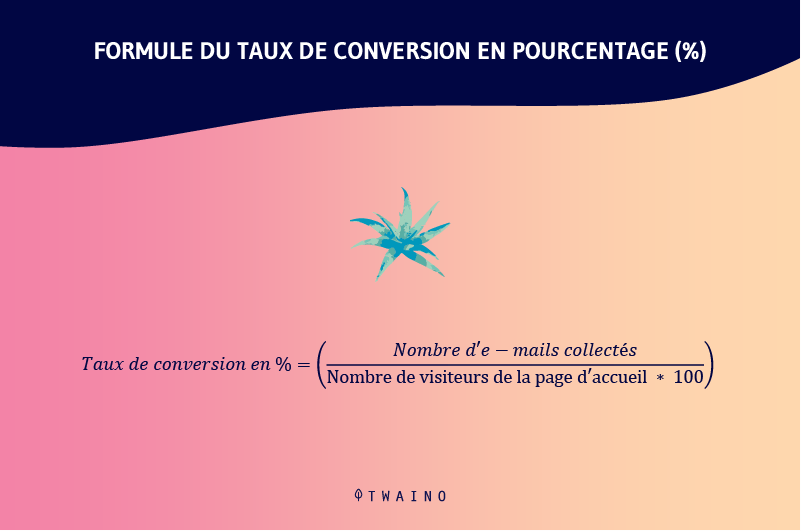
It is determined by the ratio between the number of sales and the number of unique visitors who arrive on your site.
Its role is to help you understand the behavior of Internet users on your site. According to the convertize, the right conversion rate depends on the sector of activity concerned:
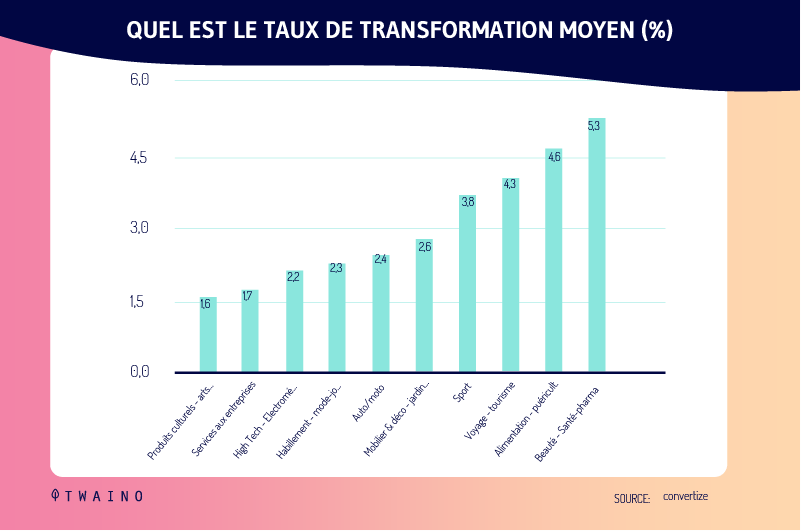
But the information that the indicator will provide you with can allow you to act on certain elements in your strategy.
Indeed, when you set up this indicator, you obtain information on:
- The behavior of your prospects;
- The step at which they stop the process leading to the performance of the requested action.
This information could allow you to optimize your conversion strategy and increase the conversion rate, as well as your income.
It can also allow you to define a quality target audience. Better, the information collected can allow you to refine your strategy since thanks to them you will know exactly what to optimize.
However, remember that the indicator corresponding to the conversion rate can be influenced by a set of factors among which you have:
- The payment process (for e-commerce sites);
- The few means to carry out the action (few means of payment offered, for example, to make a sale);
- A complicated form filling procedure;
- Poor page optimization;
- The unsuitable cost of the product offered;
- The quality of the product;
- The slowness of the process leading to the completion of the requested action.
2.1.9. The average number of page views per session
If you have a site that has several pages, this indicator will allow you to determine the most popular pages of your website. It is calculated by the ratio of the total number of visits per page to the number of visitors.
This number may decrease if:
- Your site performs poorly or has a high loading time;
- Internet users cannot find the information they came for;
- The contents are not original;
- You are constructing your pages poorly.
The data collected thanks to this indicator will allow you to understand your Internet users as to their commitment, or in relation to what they appreciate on your site.
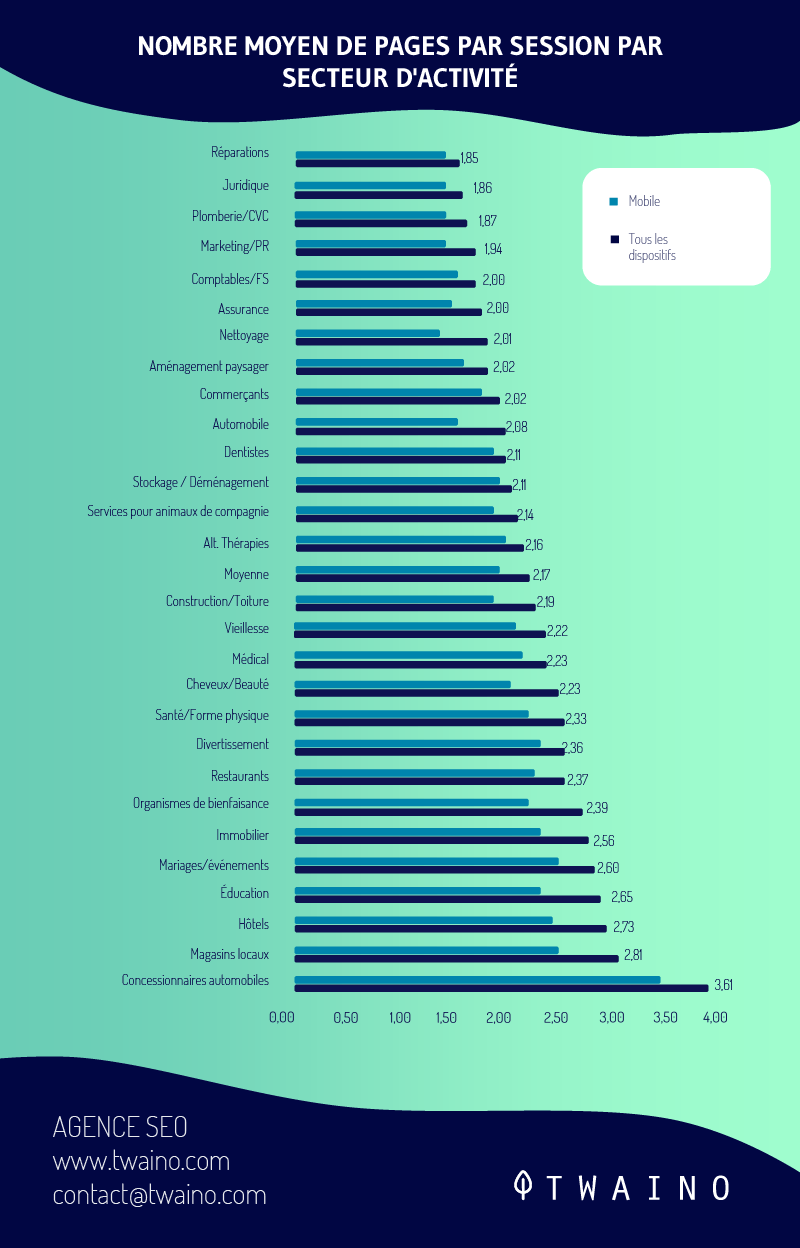
Being in marketing, I’m slightly below the industry average figure: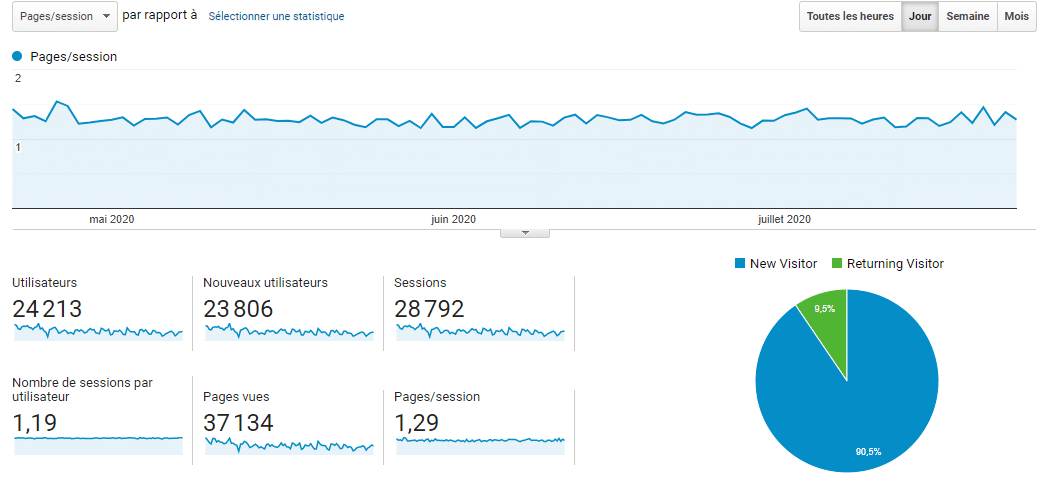
According to the littledata, the good rate of page visits per session from which a site can estimate to have an excellent performance at the level of this indicator is 4.4.
However, the indicator no longer really has its place when it comes to a site that has only one page.
You can nevertheless ensure that this number is of quality and raise it by implementing various actions. Among other things, you can:
- Create original and high-quality content;
- Ensure that content is optimized to be read by visitors.
2.2.10. The scroll depth of your site
The scroll depth indicator tells you how the content you offer is viewed.
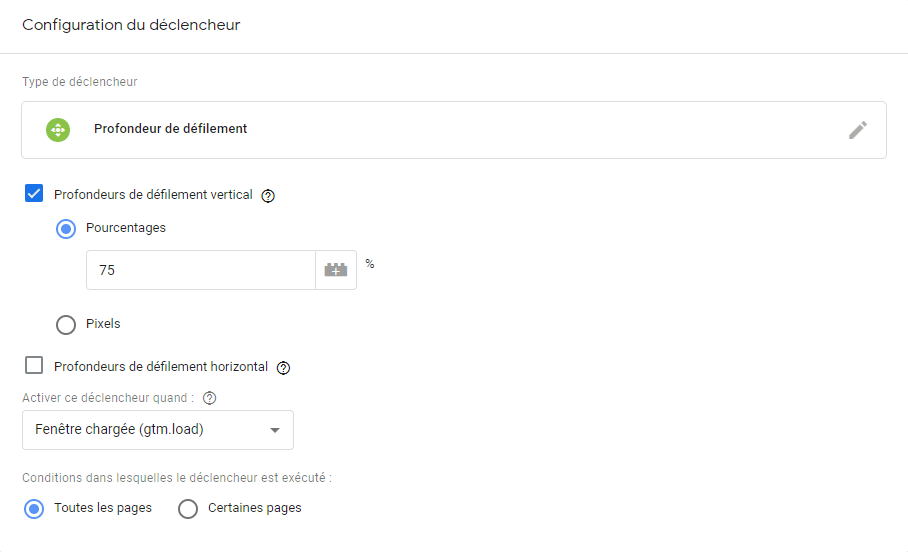
source : Ronanhello
Thanks to the data from this indicator, you will be able to know if your content is readable and if your articles are appreciated.
Thanks to the data that you will be able to collect using the indicator, you can know the kind of content that should be published to retain Internet users.
Likewise, knowing exactly where people stop on your site gives you an idea of the best places to place your call-to-action (CTA) buttons to get more clicks.
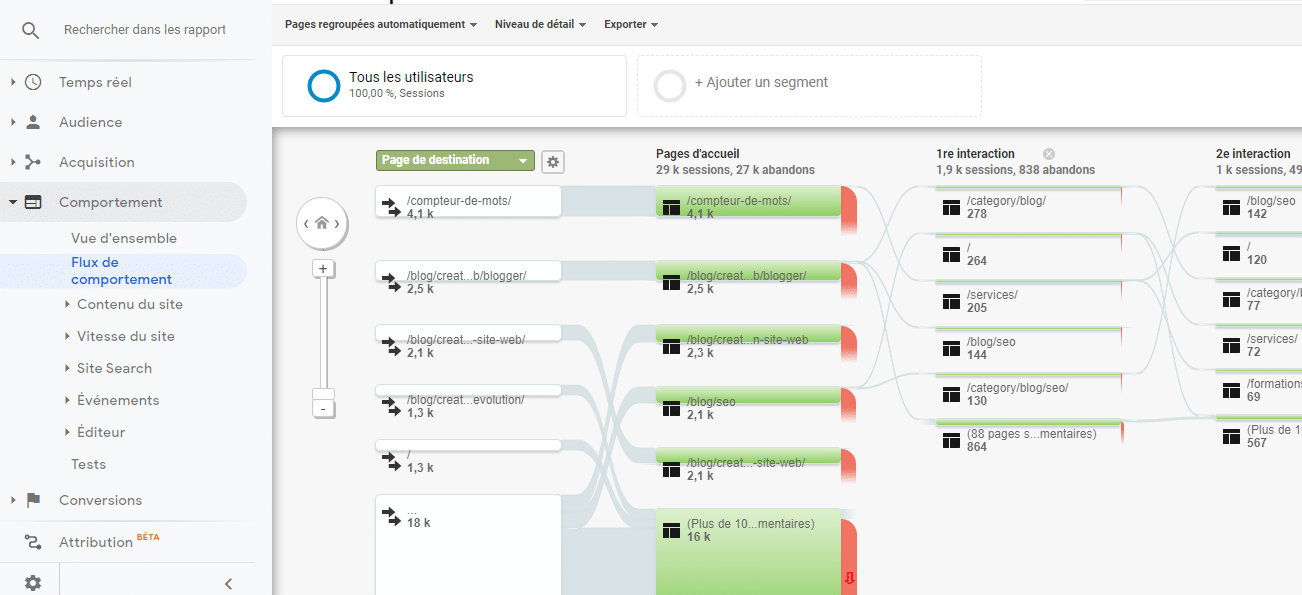
The Google Tag manager allows you to set parameters to track the scroll depth of your pages.
2.2.11. The domain authority of your website
When we talk about the domain authority of a website, we are referring to the strength of this website. This indicator created by Moz measures on a scale of 1 to 100 the DA strength of your website.

Thus, according to this scale, if your website obtains a score close to 100 it will mean that it will be authoritative in the search results of Google.
It is therefore important for your SEO strategy since it allows search engines to judge the value of your website.
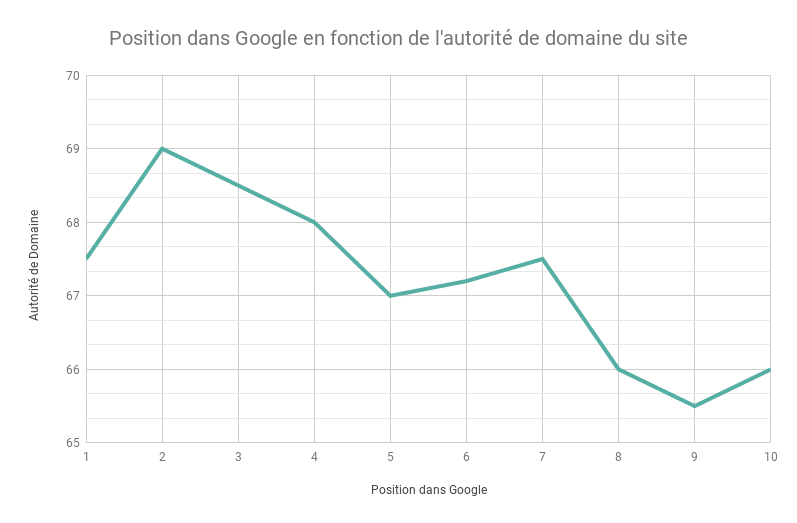
The authority of your domain is calculated on the basis of several parameters among which you will find:
- The quality of the content you publish;
- The number and quality of links pointing to your website;
- The Moz trust which determines the quality of the sites that come up to you;
- The structure of your site.
For example, if a site with a good DA score puts links in its content that redirect to your site, this will help increase your own score and therefore probably gain a few more positions in Google.
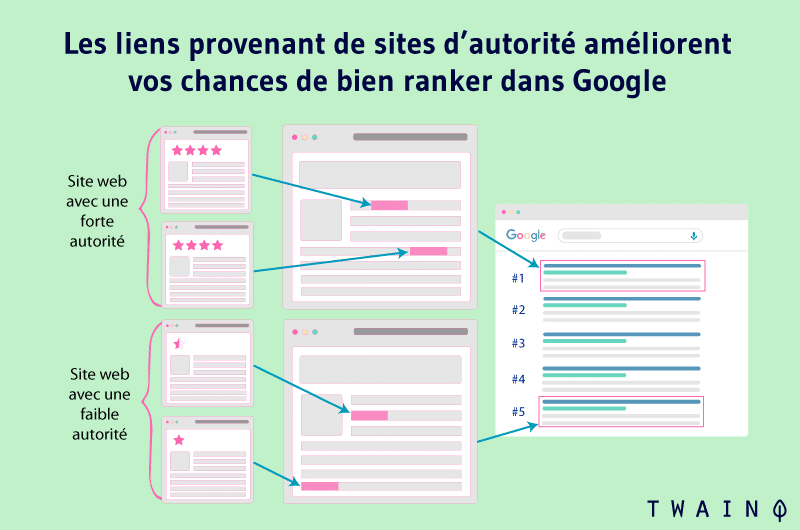
To find out your domain authority score, you can use Mozbar.
You will be able to know your score and refine your optimization strategy for search engines. Only a few sites have reached the 100 mark, such as YouTube.

Either way, you can improve your DA score by taking a few actions. Among these, you can retain:
- A good strategy for creating backlinks ;
- A good internal network ;
- Optimizing your meta descriptions and using the right tags;
- The creation of quality content that brings added value to Internet users;
- Removal of unnecessary links;
- The good presentation of your site on both mobile and computer.
2.2.12. The return on investment in SEO
The return on investment is a very important indicator because it allows you to determine if the efforts of the SEO actions that you have put in place have borne fruit.
Clearly, with the data from this indicator you will be able to make the comparison between the earnings spent and the results obtained. If it has a profit, you will know that your SEO is positive.
On the other hand, when there is a loss, you can conclude that there is a negative SEO strategy. To calculate your return on investment, the formula is as follows:
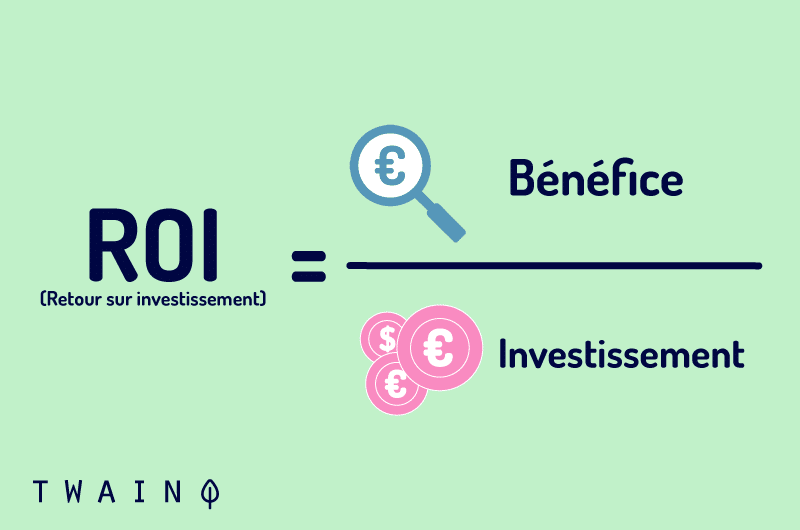
However, it should be noted that the calculation of the SEO ROI is a purely technical operation, it is actually based on several data among which you can have:
- The number of visits;
- The conversion rate;
- The number of transactions;
- Turnover.
2.2.13. Growth
Growth is a key indicator of the performance of your SEO strategy. It relates to the evolution of your SEO strategy from one period to another.
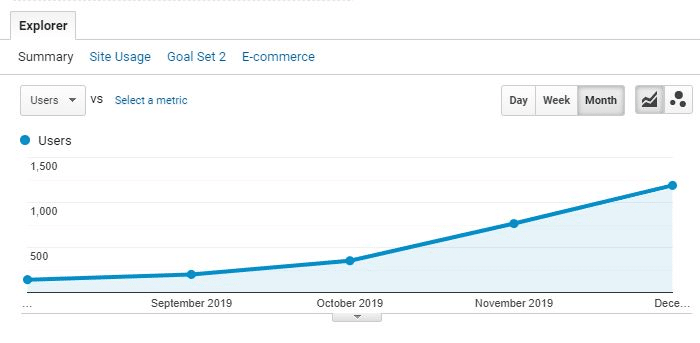
It can determine on its own whether your strategy is effective or not since it would be enough to see how your SEO results have evolved to say whether they are going in a positive direction or not.
These are the most important SEO KPIs to consider when you want to keep an eye on the performance of your website.
Chapter 3: KPIs to consider for your web marketing strategy
In this chapter, I will discuss the various key performance indicators other than those relating to SEO.
3.1. KPIs for SEA – Search Engine Advertising
Unlike SEO, which is free referencing for search engines, SEA refers to paid search engine optimization techniques.
It covers:
- Advertising campaigns and paid advertisements;
- The purchase of keywords;
- The purchase of commercial links.
Its effectiveness can also be measured using KPIs. Here is a list of KPIs that can help you measure the performance of an SEA strategy:
- Cost per click;
- The click-through rate;
- The cost per conversion;
- The impression rate;
- The quality of the ad;
- Customer lifetime value;
- Ad positioning.
3.1.1. The cost per click
The cost per click allows you to identify what a single click cost you. It is determined by the ratio between the amount invested in a campaign and the total number of clicks obtained.
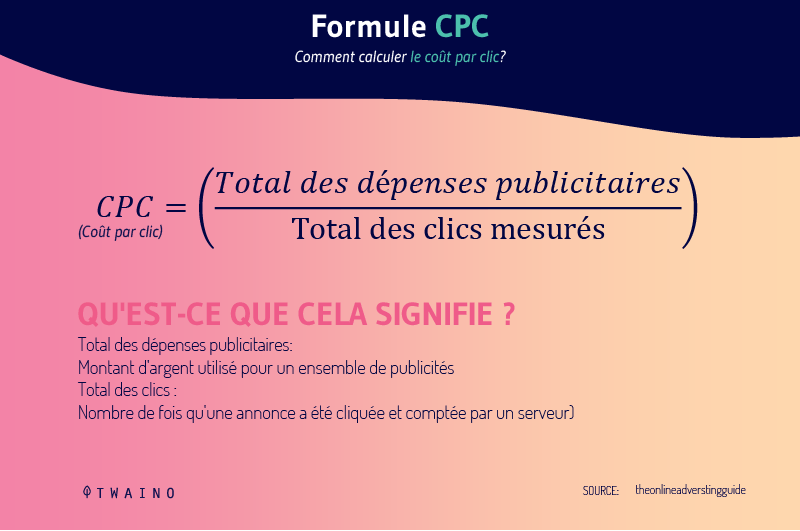
Among the main providers of this service, you have Google Analytics and Yahoo. The cost per click essentially depends on the competition for the keyword used and the type of search engine.
3.1.2. The click rate
The click rate indicator designates the ratio between the number of clicks obtained for an advertisement and the number of displays of this advertisement.

For example if an online ad gets 40 clicks when it has been viewed 500 times, the click through rate would be equal to:
(40/500) * 100 = 8%
3.1.3. The cost per conversion (CPA)
This designates the average amount charged to you when a user follows all the steps of the process and performs the action displayed on the ad.
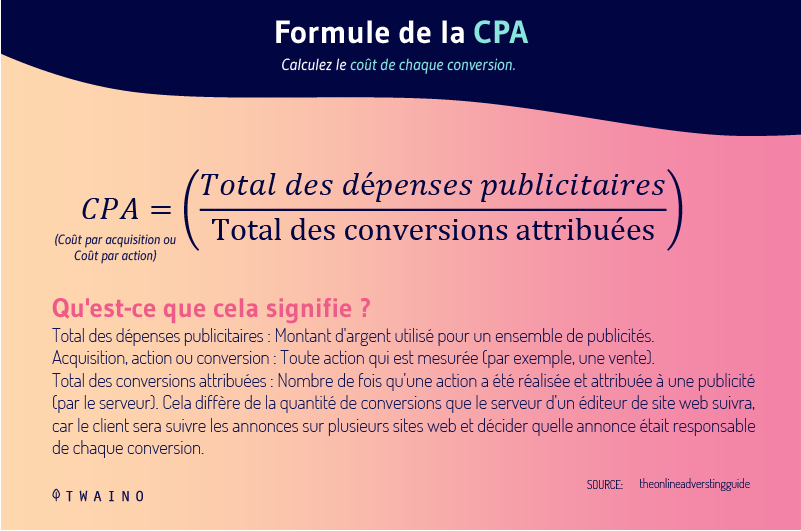
It can be calculated by dividing the total cost of a conversion by the total number of conversions.
3.1.4. The impression rate
This KPI indicator refers to the number of times a user saw your ad, regardless of whether they clicked on it or not.
The impression share is determined by:
The ratio between (the number of people who interacted with your ads / the total number of times the ad was displayed) * 100.
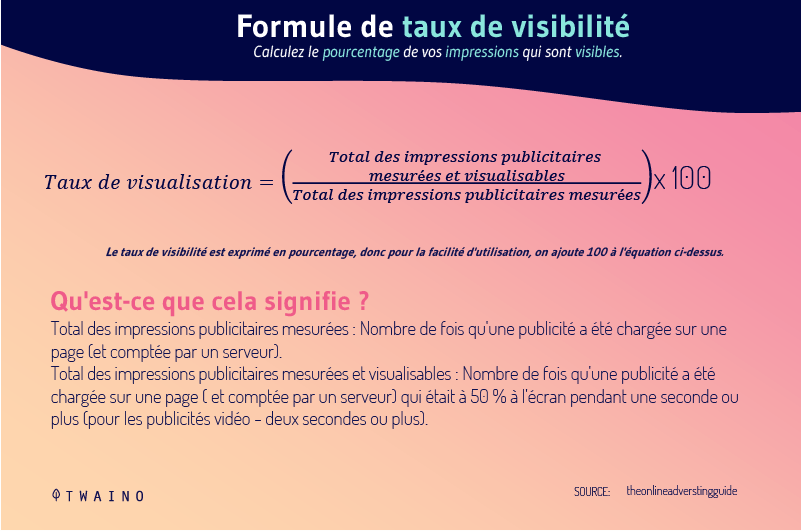
For example for an ad that has been displayed 3000 times, if you got 100 interactions, then the impression share will be equal to: (100/3000) *100 = 3.33%
It gives you an idea of how people interact with your ads. It also gives you an idea of the strength of your competitors.
For example, if for an ad you have a 3% impression share, this means that the competitors own the remaining 97%.
3.1.5. Ad quality The quality
level refers to information on the quality of your ads. It is determined based on the performance of the keywords you use in your ads. The Quality Score corresponds to a score between 1 and 10:
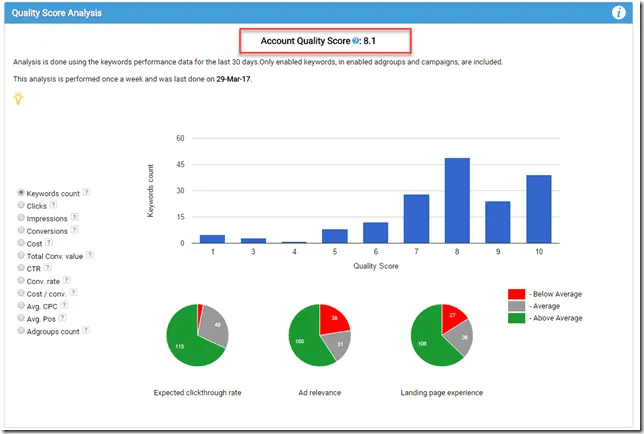
Source : adalysis
If you get a score between 1 and 6, it means that your ads are not performing well enough and that you are using a lot of money to make advertising.
On the other hand, if your scores are between 7 and 10, Google informs you that your performance is good.
Here are some of the criteria Google uses to rate the quality of your ads:
- Your account history;
- The relevance of the keywords;
- Target devices;
- Relevance of the home page.
3.1.6. Customer Lifetime Value
This is an indicator that allows you to predict the overall profit you can make from a customer.
It is based on data such as the average lifespan of a customer and the theoretical evolution of consumption.
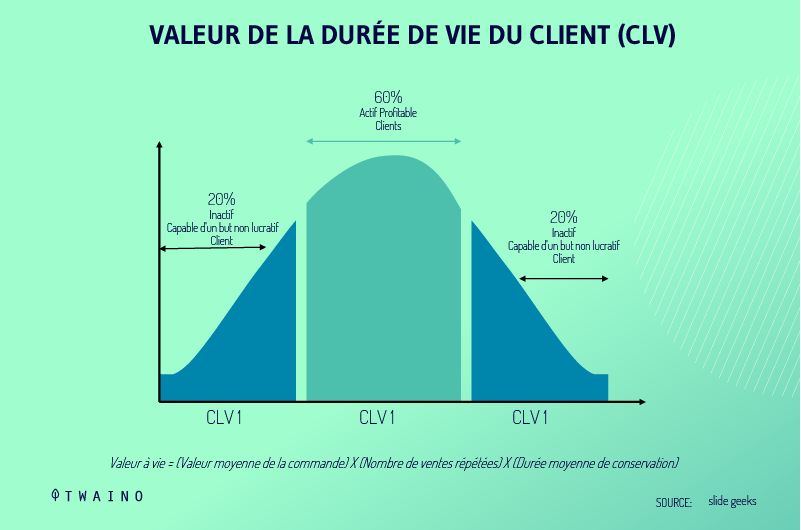
Remember, however, that this is a difficult indicator to master and that marketers do not always determine it in the same way.
For example, some marketers determine the lifetime value of their customers just by looking at how long the customer has been with them.
3.1.7. The positioning of your ads
In the same way that the results for organic SEO are displayed, Google operates a ranking for the display of ads.
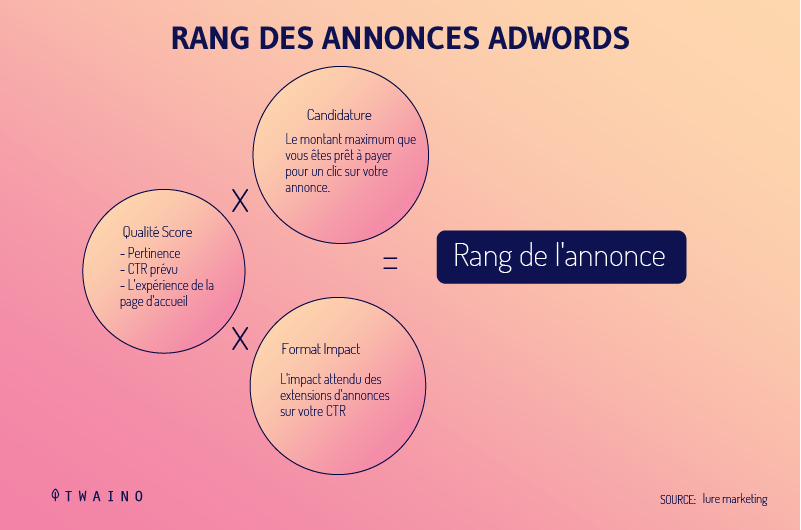
Generally, this is a balanced view for both forms of optimization.
Either way, this average position can be calculated by multiplying the average level by the advertiser’s maximum cost per impression.
3.2. Social Media KPIs
Apart from search engine optimization, you also have the option of optimizing your business or website from social media. This is SMO – Social Media Optimization.
It brings together all the actions aimed at adding social network functionalities to the website and content sharing actions on the social networks themselves.
The KPIs that can allow you to follow an SMO strategy are among others:
- The growth rate of subscribers;
- The audience of your post;
- Jaime’s rate;
- The engagement rate;
- The conversion rate on social networks;
- The value of a click;
- The customer satisfaction score (Csat);
- The promoter’s net score.
3.2.1. Subscriber growth
rate Subscriber growth rate is a KPI. It allows you to measure the evolution of your audience from one period to another on social platforms.
It is determined by the ratio between (the number of new subscribers you obtained over a period on the total number of subscribers you have) * 100.
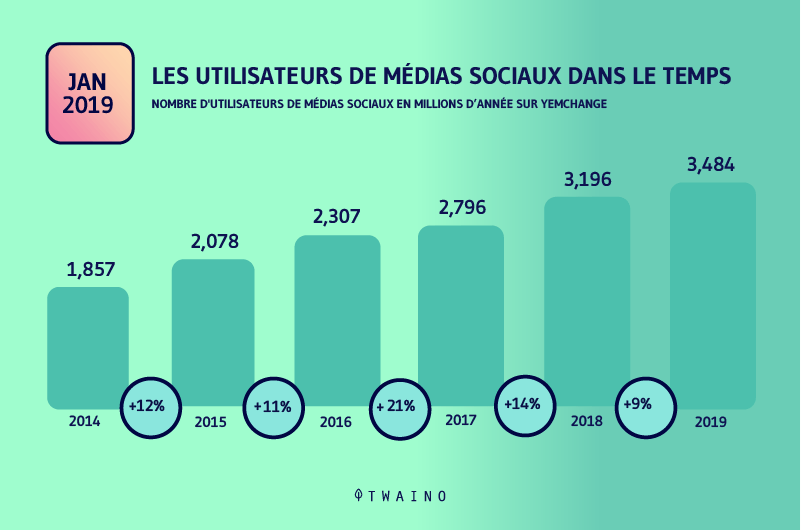
If for example during the month of July you obtained 1000 new subscribers and that the total number of your subscribers is 10000, your growth rate during the month of July is equal to: (1000/10000) * 100 = 10%
3.2.2. Your post
‘s audience Your post’s audience is the total number of people who have followed your post. This is an indicator that allows you to determine the reach of your message by identifying the number of people who have read it since it was posted.
To measure the audience of your post, simply:
- Choose a message;
- Find the number of people who have seen it;
- Divide this number by the total subscribers you have.
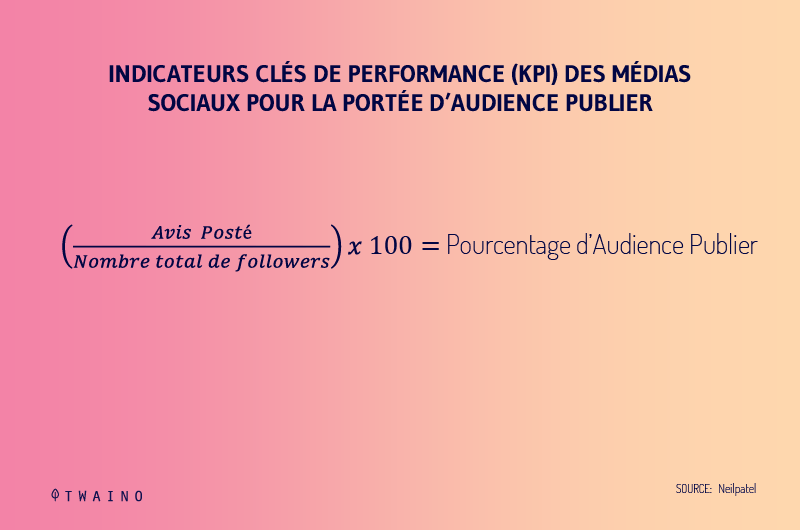
For example, if for a message that you published you get 200 views while the total number of your subscribers is 9000, the audience of this post would therefore be equal to: (200/9000) = 0.02%
3.2.3. Likes Rate
Identifying how many people like your social media posts can tell you how many people approve of what you share. You can take advantage of the information you have to offer them a product.
To know this value, in relation to a publication, you must first identify the post for which you would like to know the rate of likes.
Then take the total likes and divide it by the total number of subscribers.
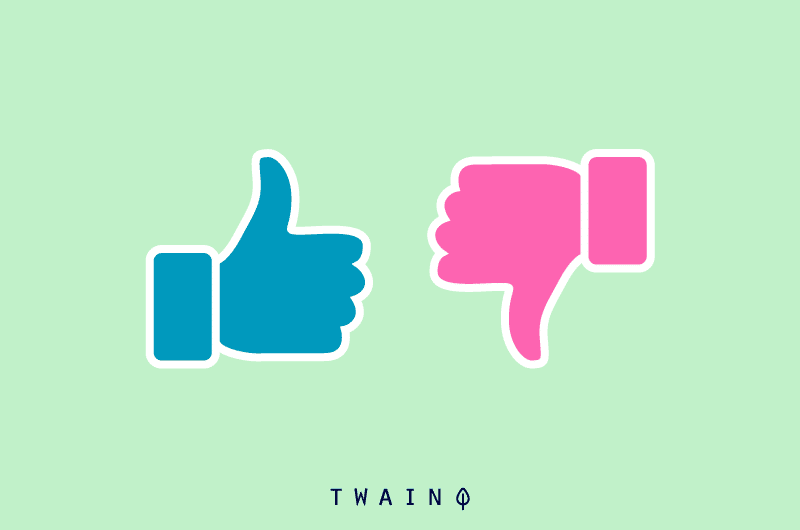
For example, for one of your Facebook posts you got 100 likes, your Facebook subscribers is 9000. To know the rate of likes of your publication, you must do: (100/9000) * 100.
This same procedure can be used to determine the rate of comments, shares, or disapprovals
3.2.4. The engagement rate
You can evaluate the engagement rate of your posts on social networks.
To determine the average engagement rate you have on social media, choose the post you would like to know the value of your engagement
Do: (the total comments, likes and shares this post has gotten and made everything divided by the total number of subscribers) * 100
3.2.5. The conversion rate on social networks
You have made a publication in which you invite your subscribers to click on a link to perform an action (subscription to the newsletter for example) and you would like to know the rate of subscribers who have carried out this action. Nothing’s easier. Just divide (the number of people who performed the action you requested by the total number of people who clicked on the CTA Button) * 100.
3.2.6. The value of a click
The principle is the same as for paid advertisements. Again, this indicator will let you know if your investment in social media advertising is beneficial.
To determine it by:
- Choose the ad on which you have invested a certain amount;
- Identify the number of people who clicked on this ad;
- Divide the amount invested in your publication by the total number of clicks.
If for example for an advertisement whose advertising value is 500 dollars you obtained 200 clicks. The conversion rate is equal to: 500/200 = 2.5
Your value per click is therefore equal to 2.5 which means that each click cost you 2.5 dollars.
3.2.7. The customer satisfaction score (CSat)
The principle here is to measure the degree of satisfaction of Internet users who have used your product or access your services.
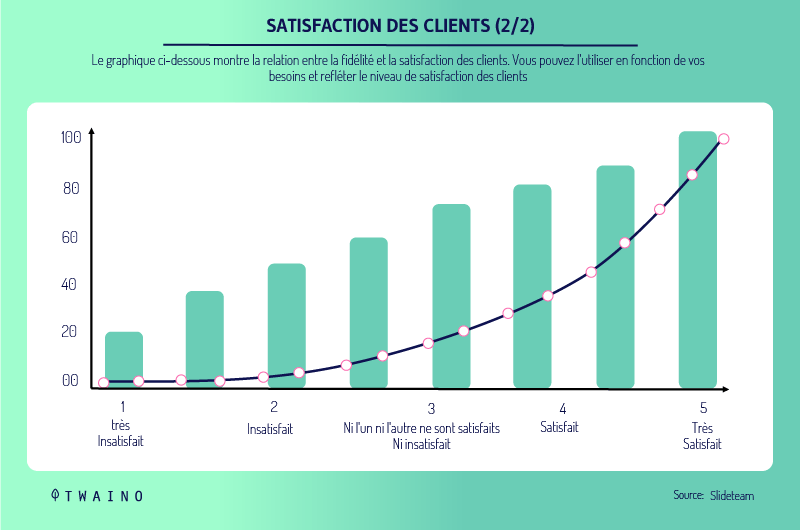
To do this, it will suffice, for example, to set up a survey in which you ask them to evaluate your product on a scale of 1 to 10. You can also ask them to choose between:
- Very satisfied;
- Satisfied ;
- Neutral ;
- Little satisfy;
- Not at all satisfying.
To determine the satisfaction score, simply take the total number of people who responded with a positive response divided by the total number of people who responded multiply by 100.
If you get a score of 80%, this means that your product is very satisfactory, however, if the score is less than 50%, this means that improvements must be made to improve the product.
3.2.8. Net Promoter Score (NPS)
This is an indicator that allows you to measure the loyalty of your customers.
Based on the same principle as the customer satisfaction indicator, the net promoter score will allow you to measure the propensity of your customers to recommend your product or service to other people..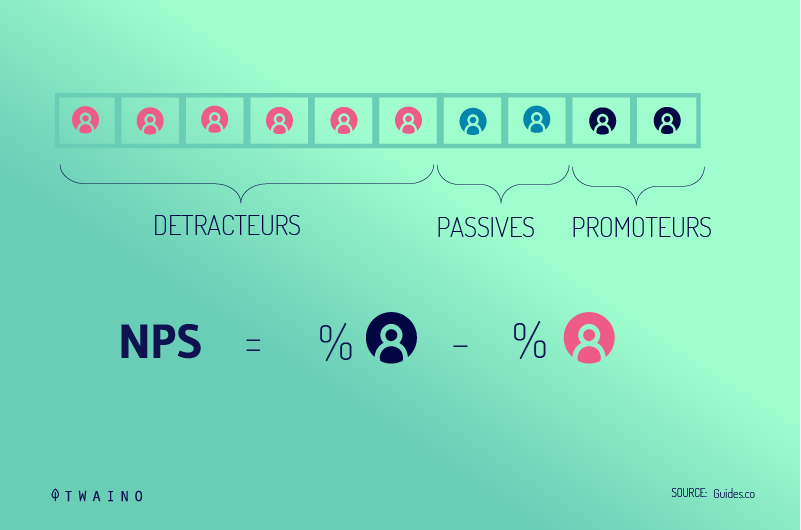
To determine this score, simply take the total number of people who answered with a positive answer divided by the total number of people who answered everything, multiply by 10.
So if you get:
- 0 to 6 ( 0-60%), customers are not willing to sell your products
- A score between 7-8 or (70-80%) indicates you are dealing with passive customers
- Between 9-10 or (90-100%) customers are willing to promote your product.
3.3. KPIs to measure your YouTube performance
Here are the KPIs you can use to measure the performance of your videos on YouTube and appear at the top of search results. These KPIs are:
- Total viewing time;
- The amount of viewing;
- retention capacity;
- The top 5 videos viewed;
- The source of your traffic;
- The number of subscribers;
- The engagement generated by the videos;
- Ranking of videos in YouTube;
3.3.1. Total viewing
time This KPI already gives you an idea of the degree of satisfaction of your subscribers.
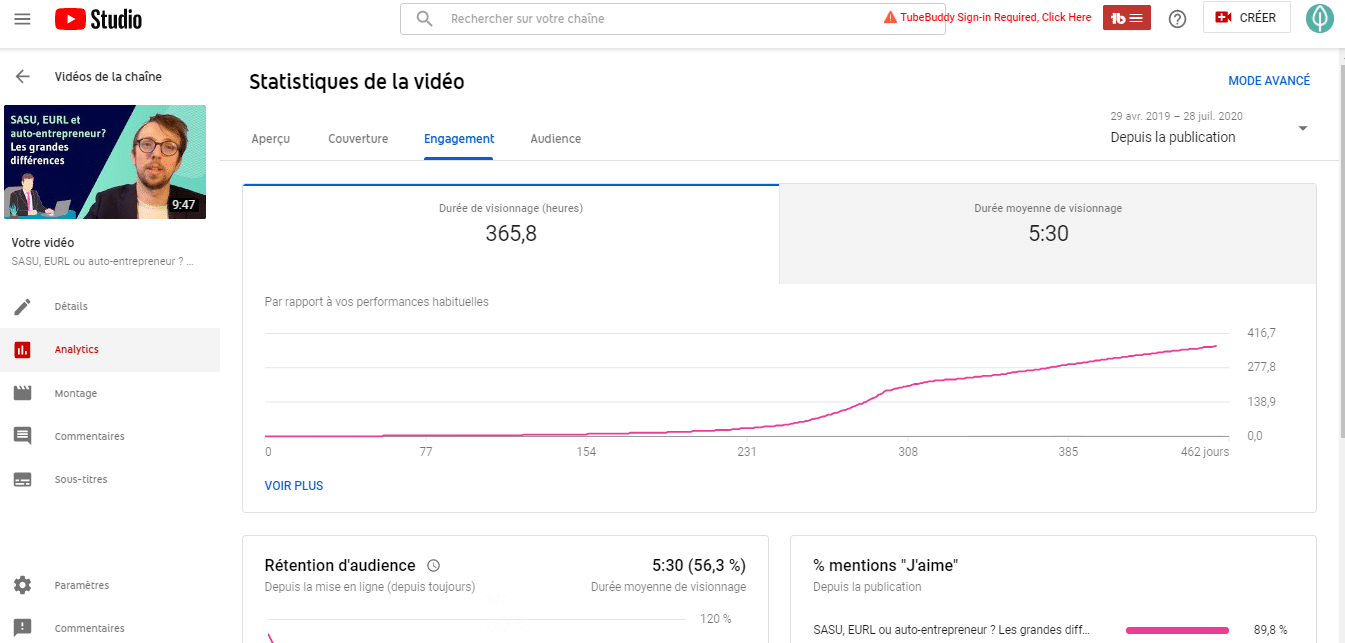
The total time during which your video has been viewed on YouTube is an important KPI since thanks to this indicator you can:
- Quickly identify new trends;
- Follow the evolution of your video performance;
- Compare the average viewing time of different videos to identify errors or new areas for improvement;
- Find insights that will help you develop best practices and optimize your video marketing.
3.3.2.Quantity
The KPI for the number of views per video will allow you to see the most popular and liked videos.
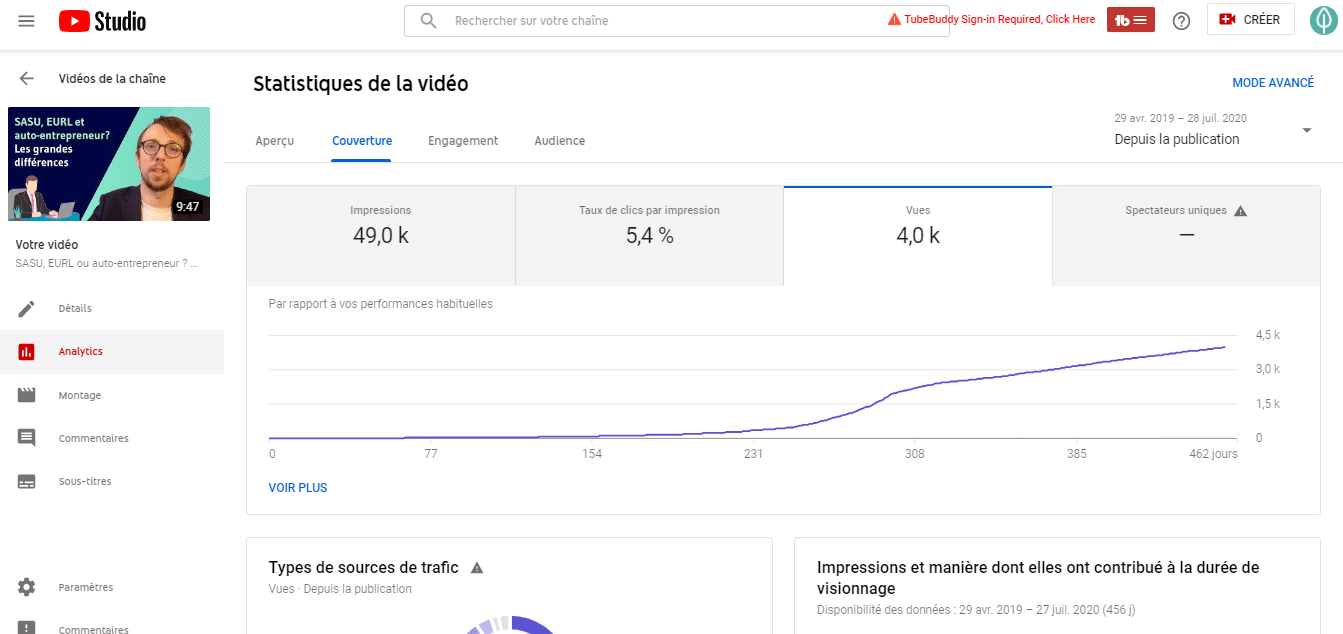
But there may be times when a video that has a large amount of views gets a low view time. This can happen when you use misleading titles or images or when your videos don’t meet viewers’ expectations.
The amount of viewing and the duration of viewing can give you a real impression of what your content is doing on YouTube.
3.3.3. Retention capacity
This indicator gives you information on how users are glued to your videos.
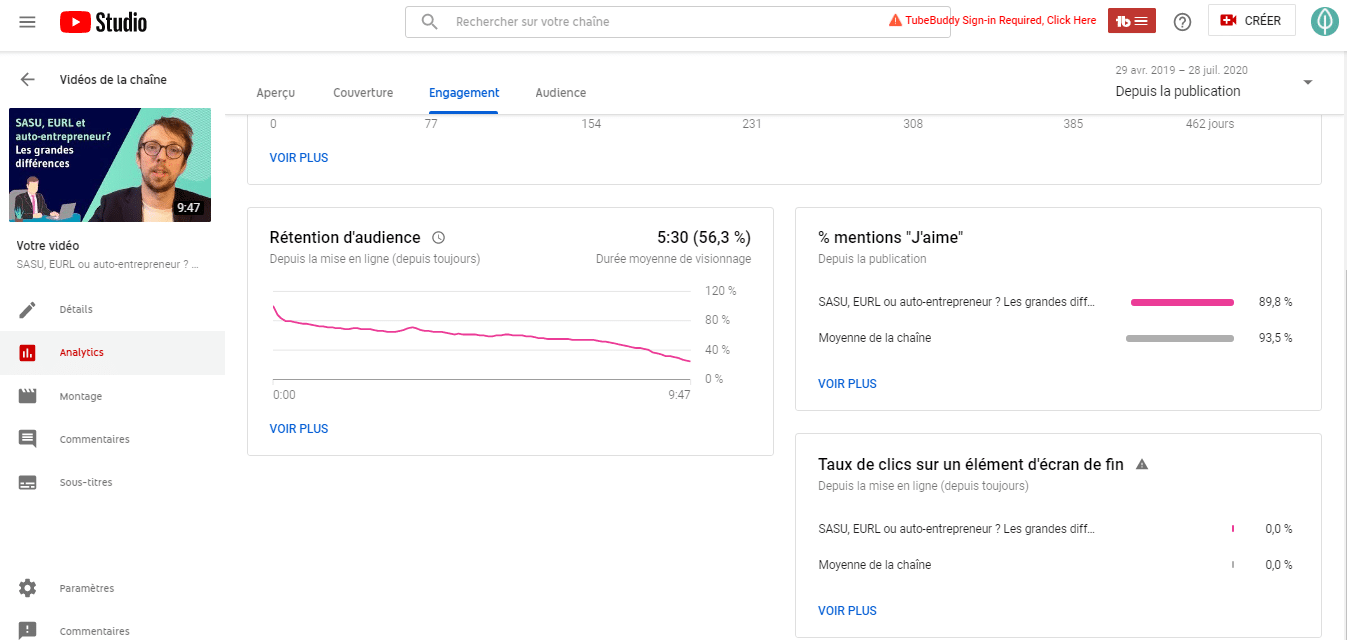
You can track this metric by looking closely at the history of videos you post to understand visitor behavior:
- How long do they typically stay on videos;
- When do they close;
- Why are they closing;
Researching all of these questions will allow you to find more effective ways to increase the time your YouTube subscribers spend on your videos.
3.3.4. Top 5 Viewed Videos
This is the indicator that will allow you to analyze your highest video performance. Indeed, displaying your top 5 viewed videos will allow you to gather data on the type of content that works best for you.
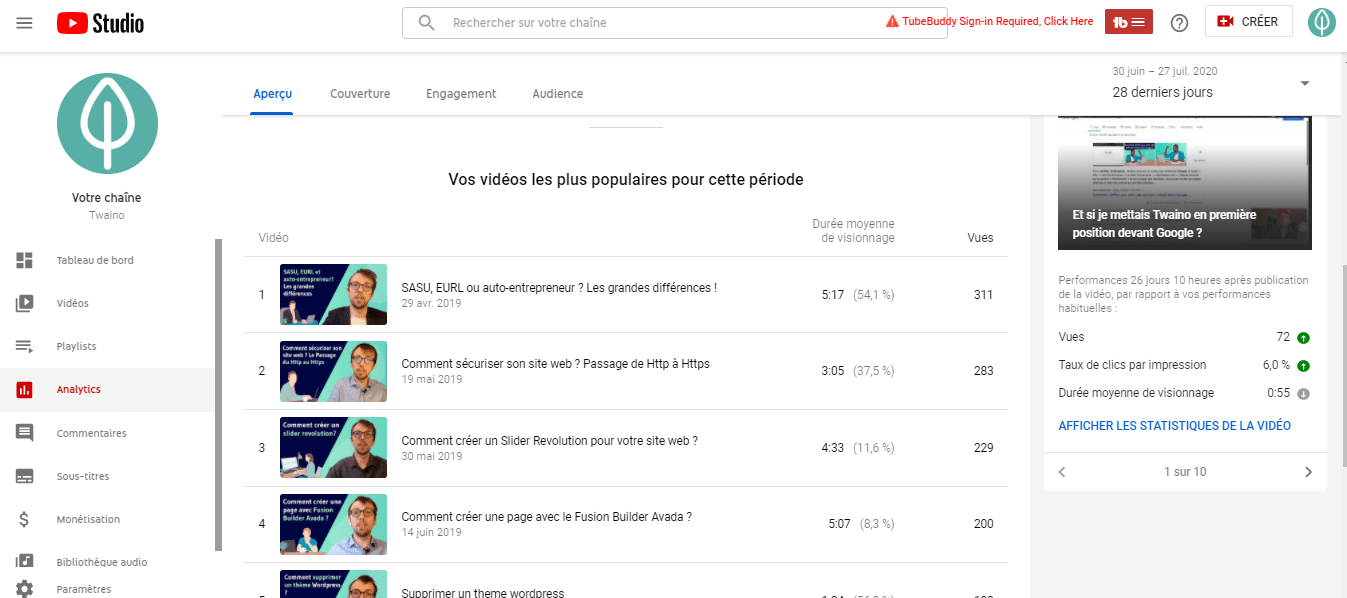
Also, when analyzing all these videos keep in mind to look at:
- The time the video was posted;
- Demographics.
You will know the type of audience that reacts the most and the best time during which you should publish your content.
3.3.5. Traffic Source
Identifying and tracking how people find your YouTube content will be a great way to increase your views. Because you can find out what was the exact search query or social media channel that convinced people to visit your channel.
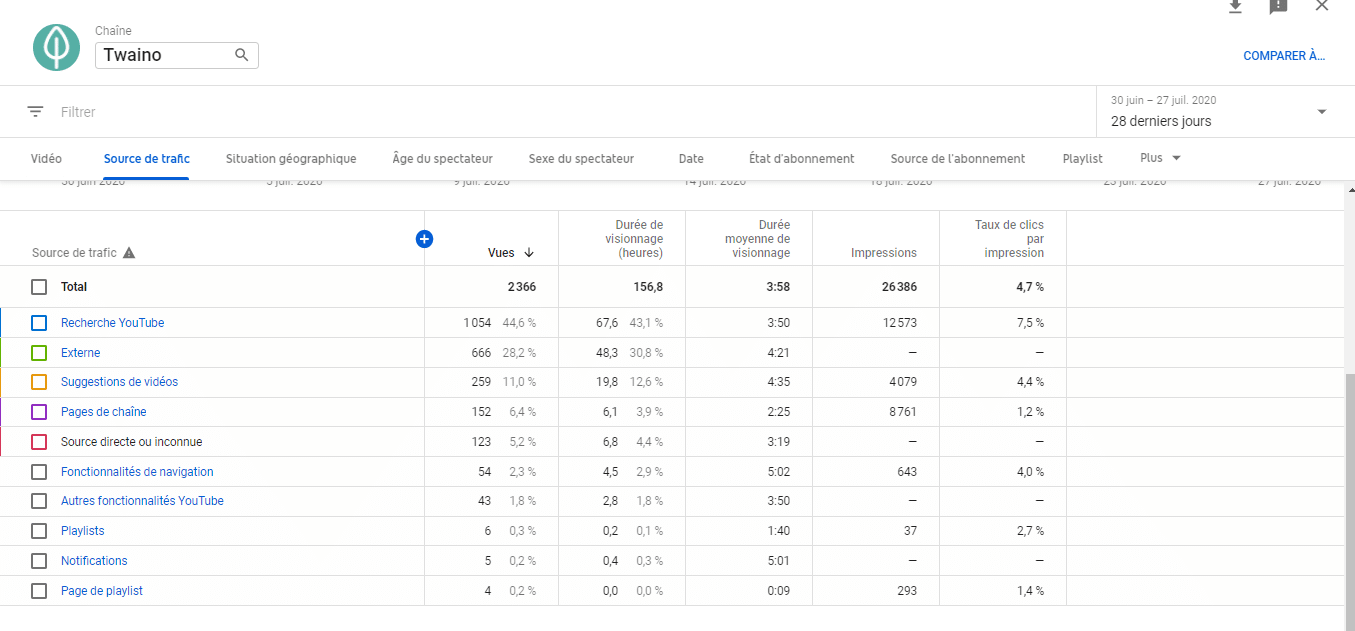
On YouTube, your content usually comes from:
- YouTube search;
- Videos suggested by YouTube;
- External sources;
- direct traffic;
- YouTube channel pages;
- The filters.
3.3.6. The number of subscribers
The number of subscribers indicator will show you the number of subscribers who regularly follow your channel.
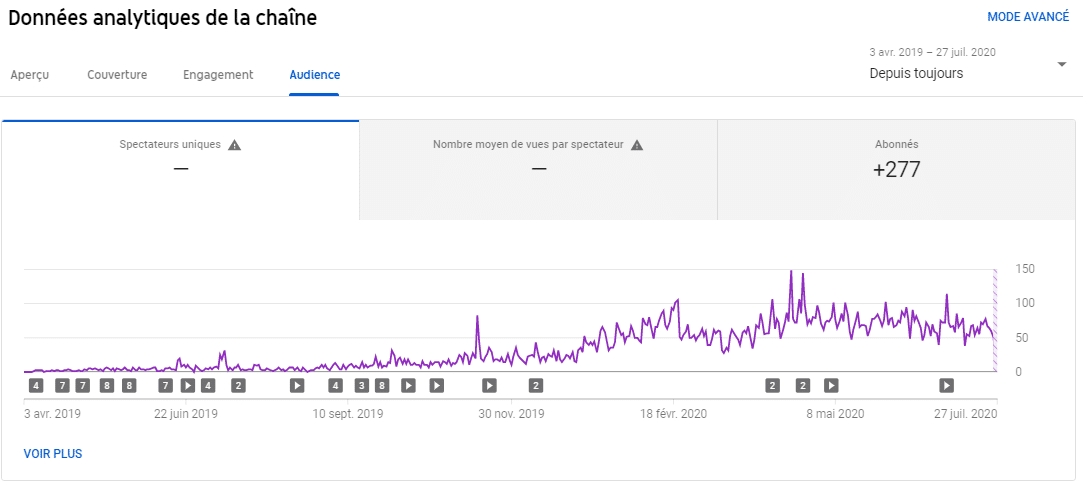
This total number of subscribers may or may not be displayed. Also you will be able to see the total number of subscribers you have gained or lost.
Tracking this metric will allow you to gauge how your videos are performing against the target subscribers you want to have over a given time period.
3.3.7. The engagement generated by the videos
This indicator lets you know how viewers react to your content. Analyzing the reactions your videos attract will help you adapt to the needs of your audience.
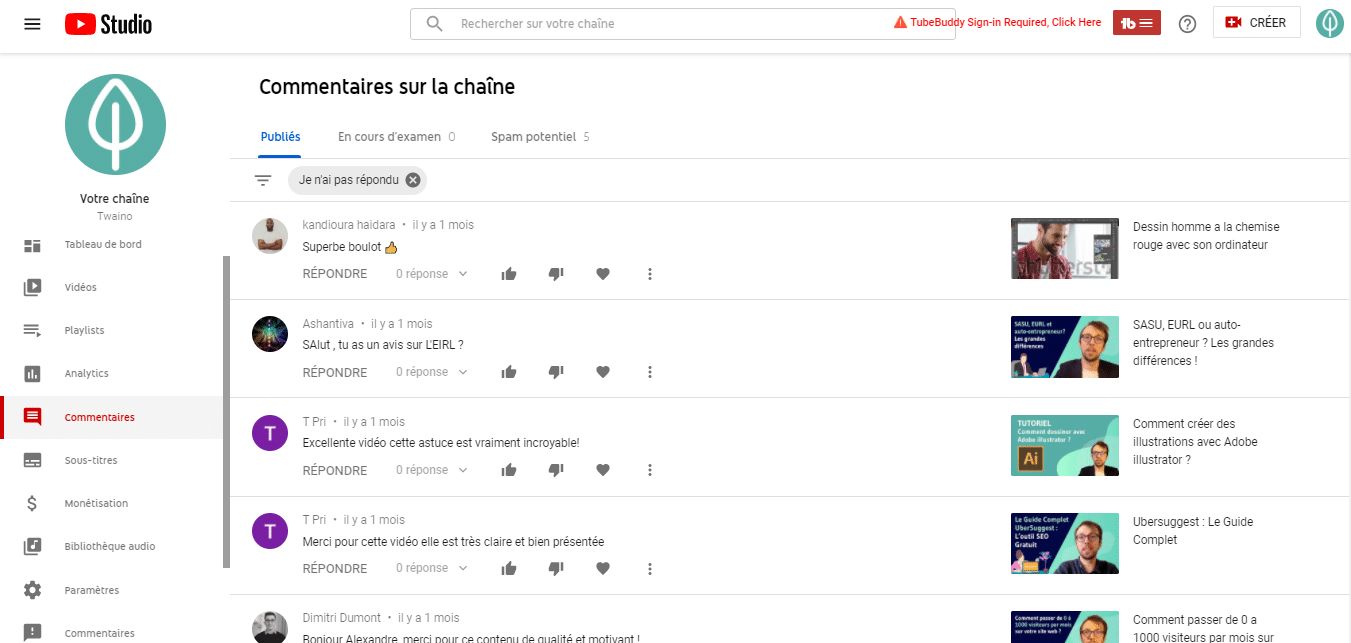
Among the YouTube data that shows you the type of engagement received, you have:
- Likes;
- Comments ;
- The shares.
Thanks to them you know if people like your content and if you are addressing the right audience.
This will help you tailor your content for more user engagement.
3.3.8. Ranking videos
Like search engines, YouTube aims to display the most relevant videos based on the words entered in the search bar. The relevance of the videos can be defined on the basis of certain criteria among which you have:
- The most watched videos;
- The least viewed videos;
- The viewing time of the videos;
- Likes and dislikes;
- Etc.
Tracking your ranking in the YouTube results display can therefore indicate the performance of YouTube video optimization.
3.4. KPIs for measuring company sales performance
The following KPIs will allow you to measure a company’s sales performance.
- Acquisition of new customers;
- Sales volume by location;
- The length of the sales cycle.
3.4.1. Acquisition of new customers
The “acquisition of new customers” indicator allows you to analyze the effectiveness of the techniques you use to transform your prospects into customers.
By closely analyzing this KPI, you will have an idea of how the representatives of the company obtain new customers.
It can be used to determine the conversion rate of your strategy.
In addition, if in the context of a comparison of the conversion rate with the number of prospects, you obtain a result lower than the objective you have defined, this may mean that you are doing something wrong in carrying out your strategy. .
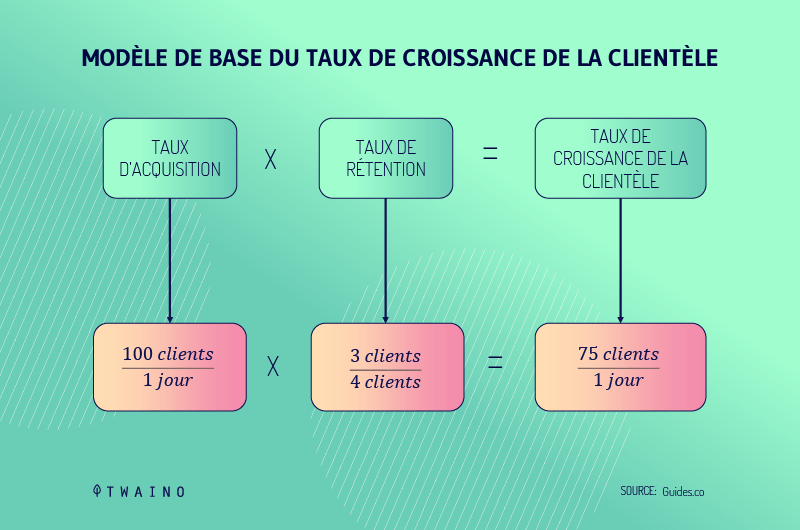
Likewise, if you find that your conversion rate drops after a certain number of acquisitions, you can use that number as a benchmark, to prevent your company’s representatives from putting in unnecessary effort or spending even more on advertising. .
3.4.2. Sales volume by location
By comparing the volume of sales you make at your locations whether it is a physical transaction or online, you will be able to collect data on how products are marketed at the level from each location.
You will be able to:
- Determine the products to prioritize for each location;
- Think about customizing the sale of products according to the realities of each location;
- Where to focus your efforts on implementing promotional sales tactics to generate more sales.
3.4.3. The length of the sales cycle
The length of the sales cycle refers to the time it took you to close a satisfactory sale. Sale satisfaction is determined by the time after which the customer has complained after a sale.
If this time is low, it will be said that you have a bad sales cycle duration. On the other hand, if the waiting time is long, you have a satisfactory sales cycle.
Here is an overview of most of the key performance indicators that you can put in place to closely monitor the efforts you are making to increase the value of your website or business.
Now, here are some tools you can use to get a view of all of these KPIs.
Chapter 4: Key Performance Indicator Tracking Tools
Here you will find descriptions of various tools that not only allow you to track the data of the KPIs you define, but also to act to match these KPIs to the objectives you set. you are defined.
4.1. Google Analytics
Google Analytics is a free statistical analysis tool available to web developers.
It comes in the form of software and allows these users to follow most of the statistical data of their sites or internet application.
It is in fact a tool that is essential for all web creators since it allows them concretely:
- Tosee a view of your digital strategy;
- To monitor the behavior of users of their site;
- Know where they go after leaving your site;
- To implement other types of measures.
In other words, this tool allows you to follow the path of your visitors and to collect a set of data which will allow you to take useful decisions for the improvement of your strategy and the achievement of the objectives that you you are set.
To use Google Analytics, you must first create an account. Account creation is not a complicated process. If you have a Gmail email address, just go through your chrome browser and go to the Google Analytics.
Once there you need to create an account by following the following three steps:
- Choose the name of your account
- The second step will be for you to choose the data you want to measure. It can be a website, a web application and an Android/iso application
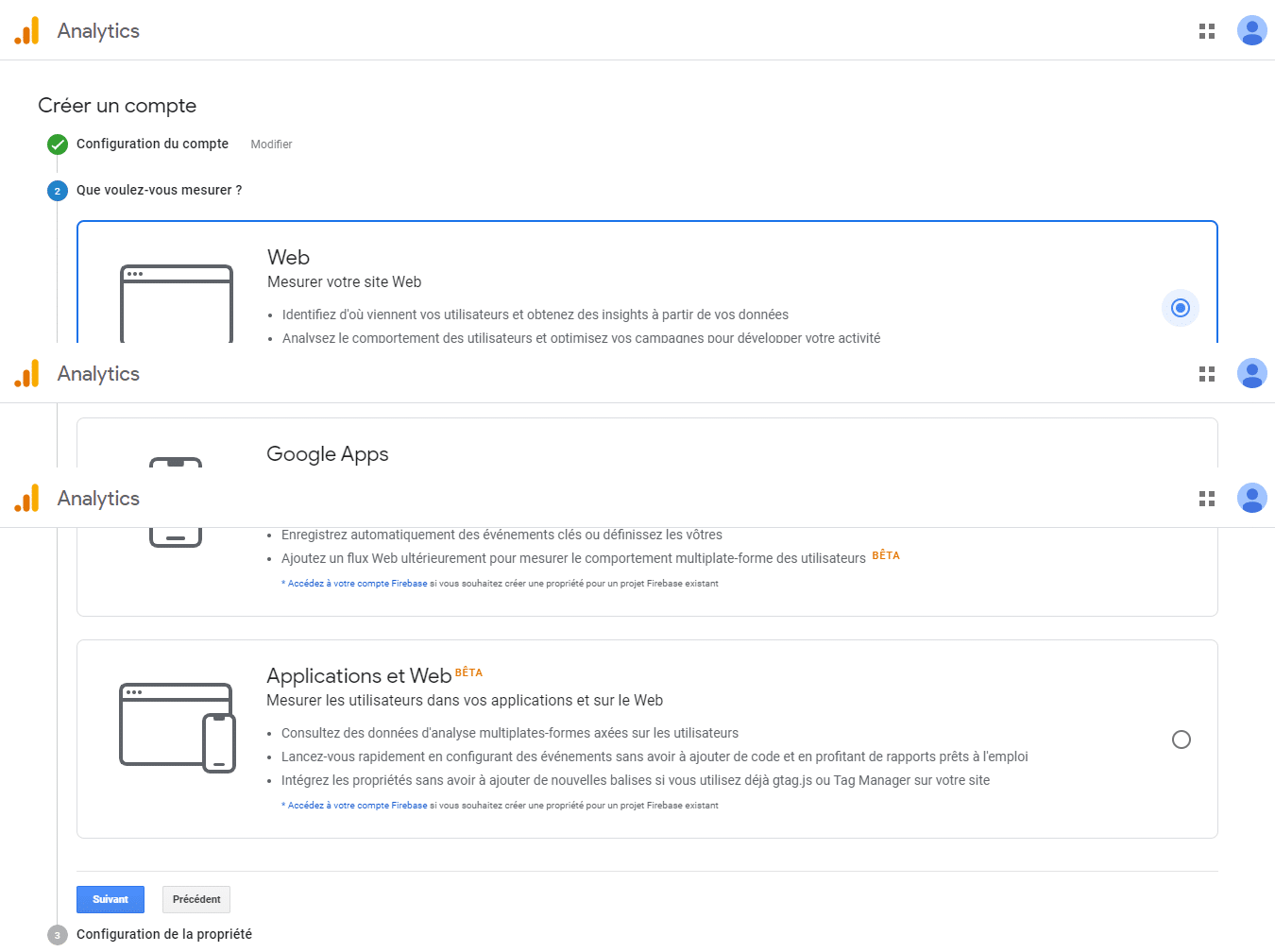
Once you have chosen what you want to measure, comes the third and final step of the creation process which asks you configure proprietary information. This information concerns when it comes to a website:
- The name of the site;
- The category of the site;
- The time zone you want to use in your reports.
Now all you have to do is accept the terms of service and wait for your Google Analytics dashboard to load.
To start seeing data for your actual site, you need to create a property. Next, tap on the tracking information and tracking code tab.
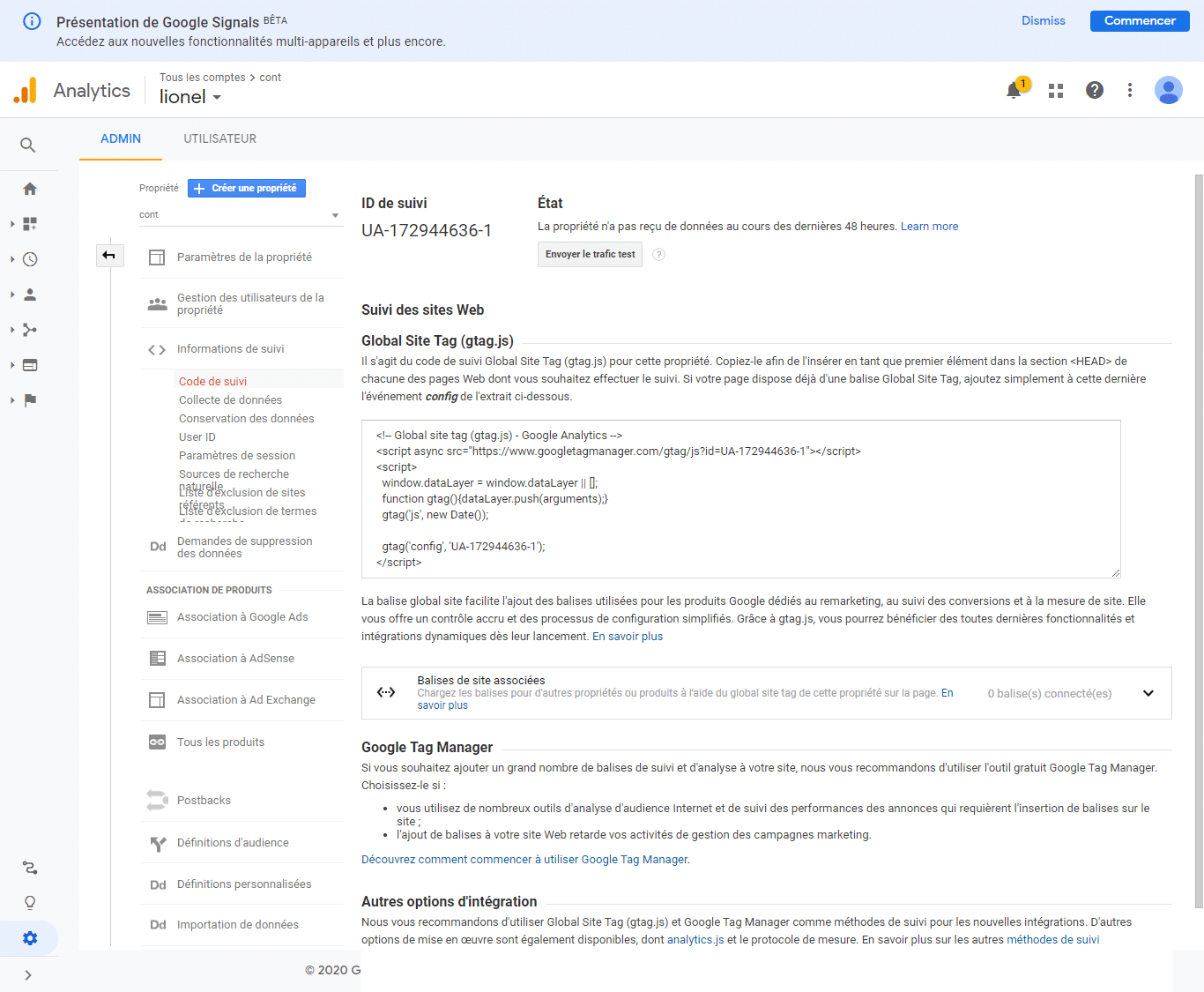
Once you get the tracking code, you will need to copy it and embed it on your website.
Now you can move on to setting up tracking data and collect statistics on the operation of your site.
Before explaining how to configure the analysis elements, it is useful for you to know the structure of your Google Analytics account.
Google Analytics displays four (4) tabs
The first tab is the home page: It displays an overview of some data from your sites. 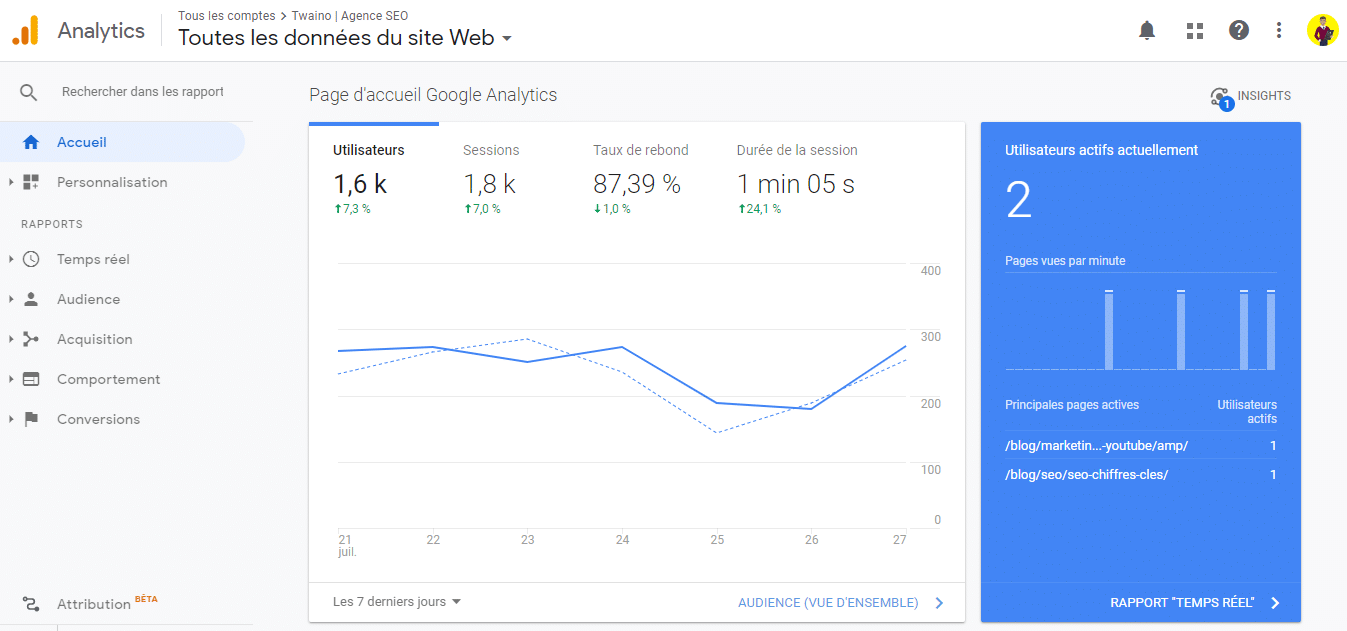
The second tab is the customizations one: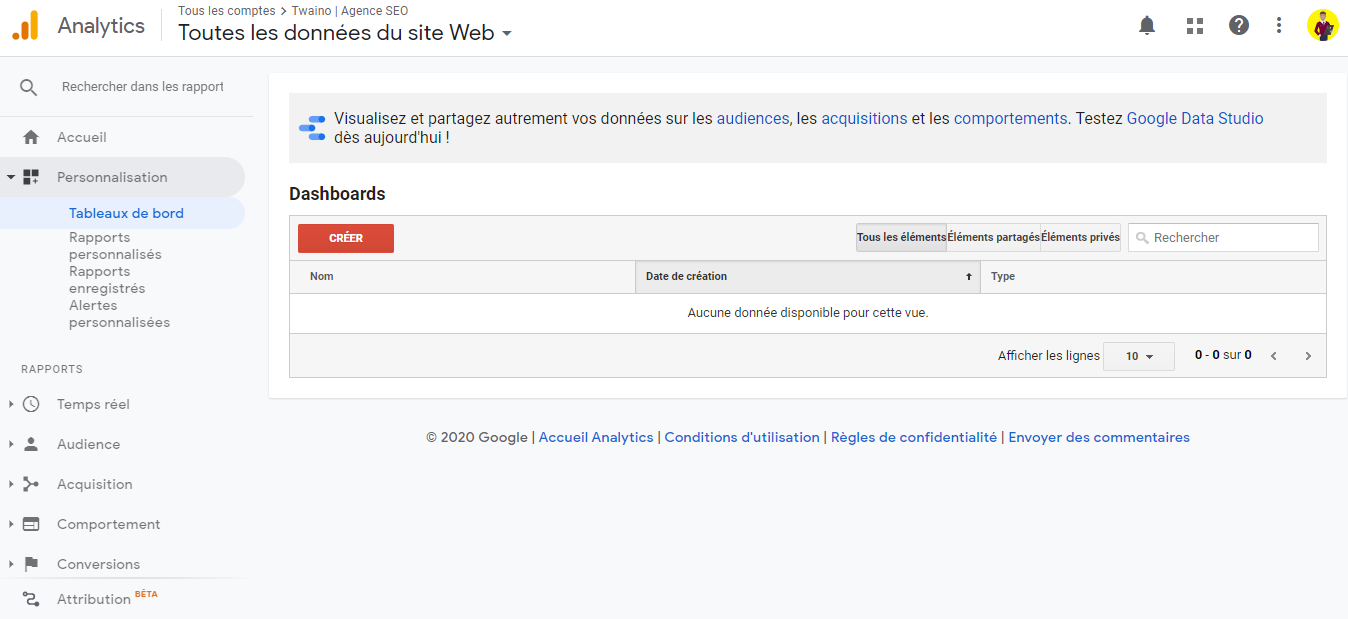
As you wish, this is where you customize your dashboards as well as your reports. You even have the option to set email alerts.
The third tab is the reports tab. At this level you find the reports on:
- The weather;
- The hearing;
- Procurement;
- The behaviour ;
- And conversion.
All of these reports tell you what’s happening on your site from when a user arrives to when they leave.
Finally, you have the administration tab which gives you an idea of the structure of your account.
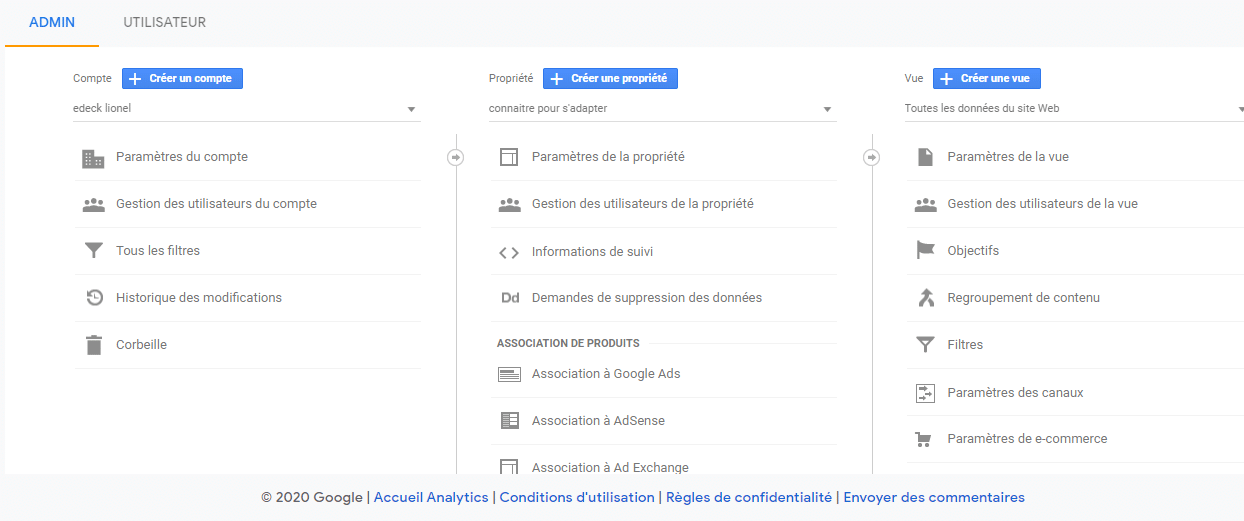
As you will be able to see, your account is well organized.
Under your current account you have at least one property and each of the properties have one or more views:
- The account allows you to manage users;
- The property uses a unique ID and allows you to connect your account to a site or other applications;
- Views represent the data you collect: They can be configured using filters. It is precisely at this level that you will configure your KPIs to obtain information on the performance or otherwise of your SEO strategy.
Google allows you to collect information about several KPI indicators, for example:
- Conversion rate;
- The source of your traffic;
- The loading time of the pages of the site;
- The average time spent by a user on your site;
- The numbers of outputs;
- The exit pages the bounce rate, the search terms on your site;
- Etc.
You also have the option of setting up your own KPI indicators. To do this, simply click on the personalization tab and choose personalize reports.
When the page appears, then click on new custom report and configure the related information.
- The title of the report;
- The content of the report;
- The dimensions ;
- Filters;
- The views ;
- Then save.
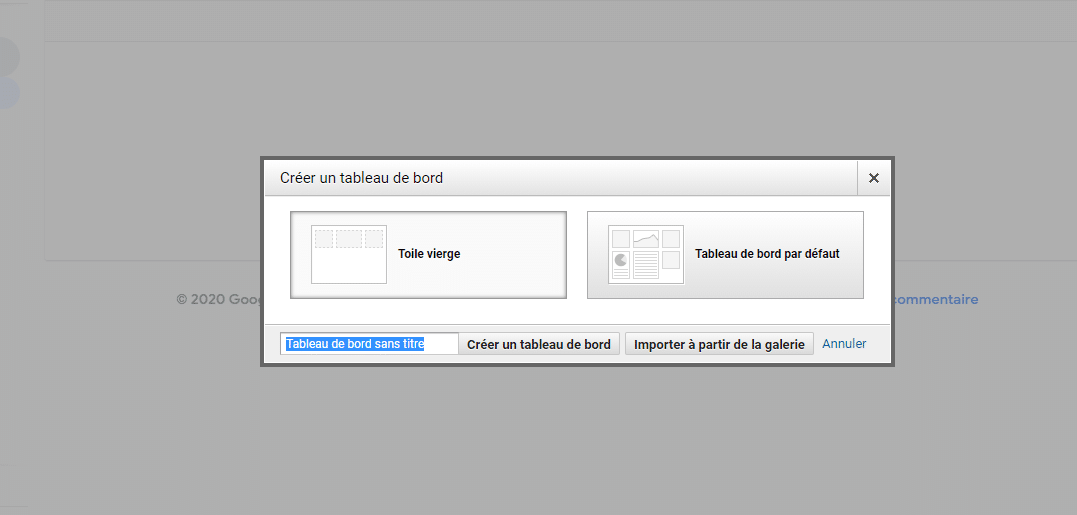
4.2. Google Search Console
This is a free tool that allows you, among other things:
- To know the frequency of exploration of a website;
- To have the list of pages that have the links that point to your site;
- To know the search keywords that display a link to your site;
- See site visits by Google robots;
- To validate your SITEMAPs.
To work with Google Search Console, just go to the Google Search Console site.
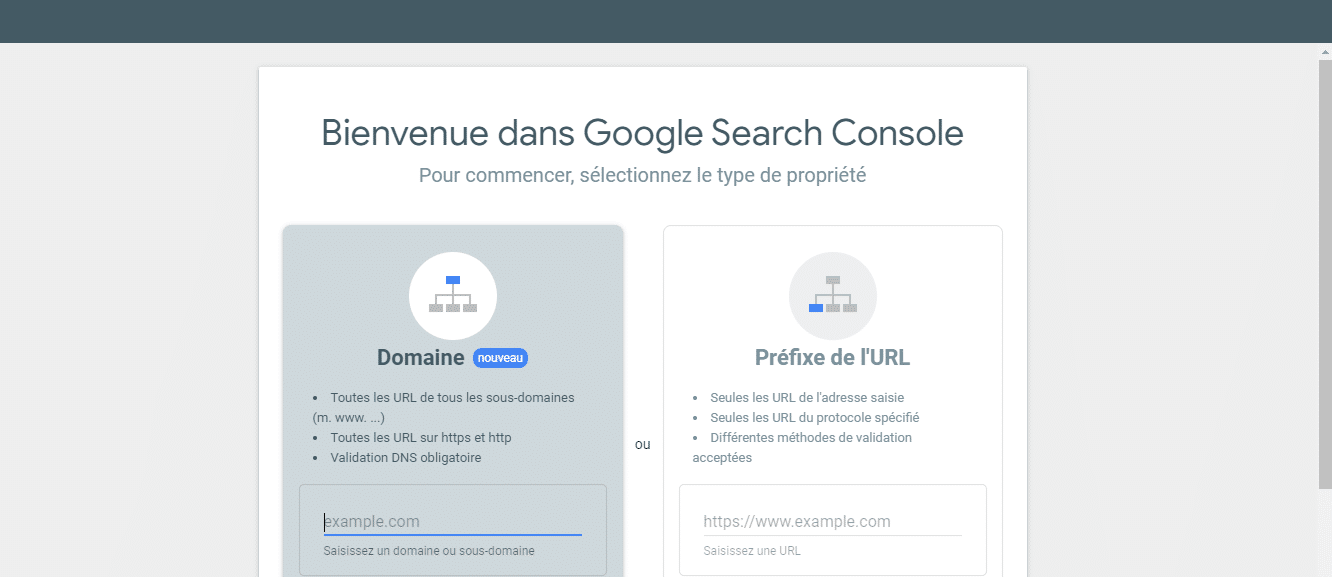
And sign in with your Google address then add your site and verify identity from your site.
At the Google Search Console, you will also find the keywords for which your site is displayed in the search results, as well as the number of clicks.
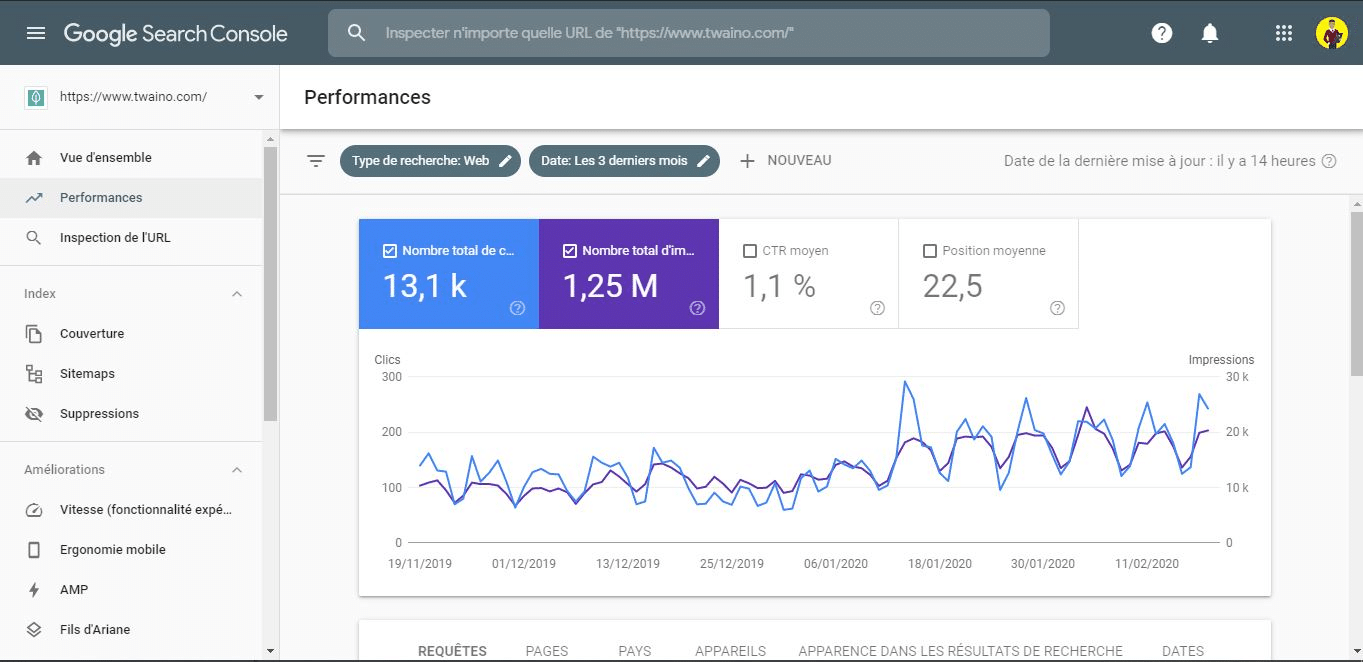
You also have the ability to see which pages appear in search results and which users go there.
Thanks to the Google Search Console, you have access to two numerous functionalities, namely:
- Removal of obsolete content from the index;
- change of address;
- Index cover;
- URL inspection;
- Etc.
You also have access to several reports such as;
- The indexing report;
- The summary report;
- The performance report;
- Link reports.
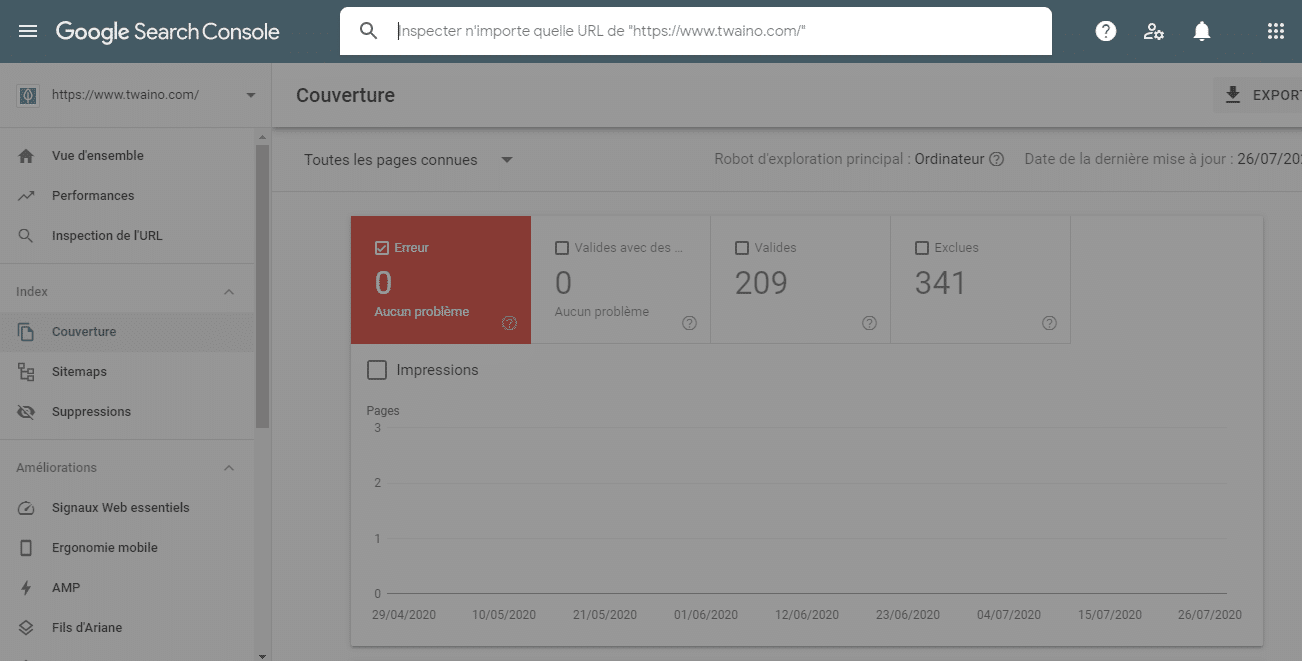
Google Search Console thus allows you to collect information on:
- Sitemap;
- Backlinks;
- Organic traffic;
- The click rate;
- Internal links;
- Your position in search results;
- Etc.
Thanks to Search Control, you will be able to optimize your site and solve these indexing problems.
4.3. SEMrush
This is a tool that helps you improve traffic to your website. SEMrush offers you 7 tools to analyze your SEO strategy and collect information on key performance indicators.
These are:
4.3.1.site audit
Semrush provides you with several useful information on the state of health of your website:
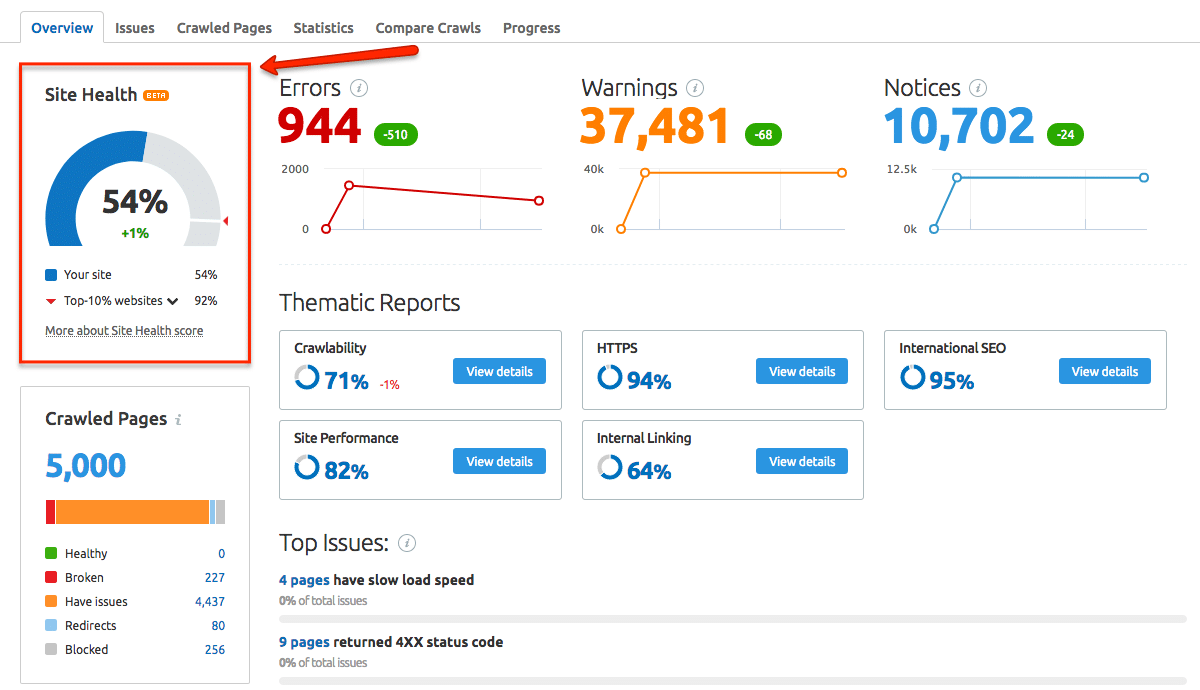
source : semrush
To audit your site, you must first configure the parameters by filling in several elements including the most essential are:
- The domain name of your site;
- The pages to check;
- The URLs to use;
- Etc.
Once the analysis of your site is complete, you will be able to read the different results on your screen.
They consist of: The
- overall site health score which gives an idea of the number of problems;
- The number of pages crawled and how many of them are healthy, broken, abnormal, redirected or blocked;
- Error evolution curves to see if the latest updates have improved or deteriorated the health of the site;
- Thematic scores on exploitability, HTTP protocol, multilingualism, loading time and internal meshing;
- A list of the 3 main problems detected, these are the ones that are the most serious (or that impact the most pages).
The SEO analysis thus carried out will allow you to detect errors that affect the referencing of your site as well as several technical opinions.
Apart from your analysis that you will find in the audit of your site, you also have the tabs:
- Pages explored during the audit: Here, you will be able to see all the pages covered by the site audit carried out;
- Statistics: Here SEMrush gives you several data classified by theme. You will find at this level the statistics relating to the markups, the depth of exploration, the sitemap, as well as the links;
- A comparison of the explorations of your website.
4.3.1. Positioning tracking
Here, SEMrush allows you to accurately track the positioning of your website or those of your customers on certain keywords.
To audit your site, you must first configure the parameters by filling in several elements including the most essential are:
- The domain name of your site;
- The pages to check;
- The URLs to use;
- Etc.
Once the analysis of your site is complete, you will be able to read the different results on your screen.
They consist of: The
- overall site health score which gives an idea of the number of problems;
- The number of pages crawled and how many of them are healthy, broken, abnormal, redirected or blocked;
- Error evolution curves to see if the latest updates have improved or deteriorated the health of the site;
- Thematic scores on exploitability, HTTP protocol, multilingualism, loading time and internal meshing;
- A list of the 3 main problems detected, these are the ones that are the most serious (or that impact the most pages).
The SEO analysis thus carried out will allow you to detect errors that affect the referencing of your site as well as several technical opinions.
Apart from your analysis that you will find in the audit of your site, you also have the tabs:
- Pages explored during the audit: Here, you will be able to see all the pages covered by the site audit carried out;
- Statistics: Here SEMrush gives you several data classified by theme. You will find at this level the statistics relating to the markups, the depth of exploration, the sitemap, as well as the links;
- A comparison of the explorations of your website.
4.3.1. Positioning tracking
Here, SEMrush allows you to accurately track the positioning of your website or those of your customers on certain keywords.
![]()
Source : SEMrush
You will be able to see which competitors are positioning themselves on the same expressions as you and the features of the results that Google displays for these keywords:
- Google Maps;
- Advertising ;
- Zero position;
- Notice ;
- Videos;
- Etc.
You will find in this tool:
- The visibility

- curve The estimated traffic

- curve The average position

- curve The evolution curves of the number of keywords:
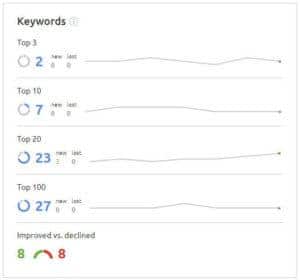
- The histogram of the distribution of keywords:
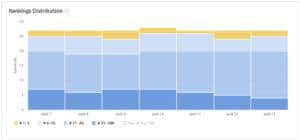
- The 5 best words -keys and their position in the Google index:
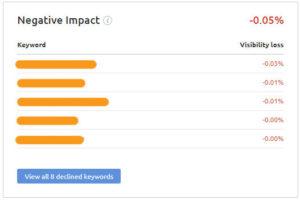
- The keywords with the best evolution over a chosen period
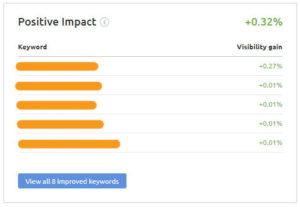
- The keywords with the worst evolution over the same period:

- The positioning of the best competitors on a list of keywords as well their visibility and evolution over a period:

- The functionalities of Google results displayed on your site:

- The distribution of keywords according to the pages of your site:
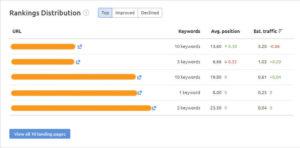
At the level of position tracking, you have an overview which displays to you:
- The features of Google results that are displayed for the query you have launched;
- The position of your site on a selected date;
- The difference in position of your site compared to the selected start date;
- The page of the site which is positioned on a keyword;
- The CPC (cost per click) of an expression on Google Ads;
- The average number of times a query was searched in the month.
4.3.2. On page SEO CHECKER
This feature of SEMrush offers you some ways to improve your pages based on a specific keyword.
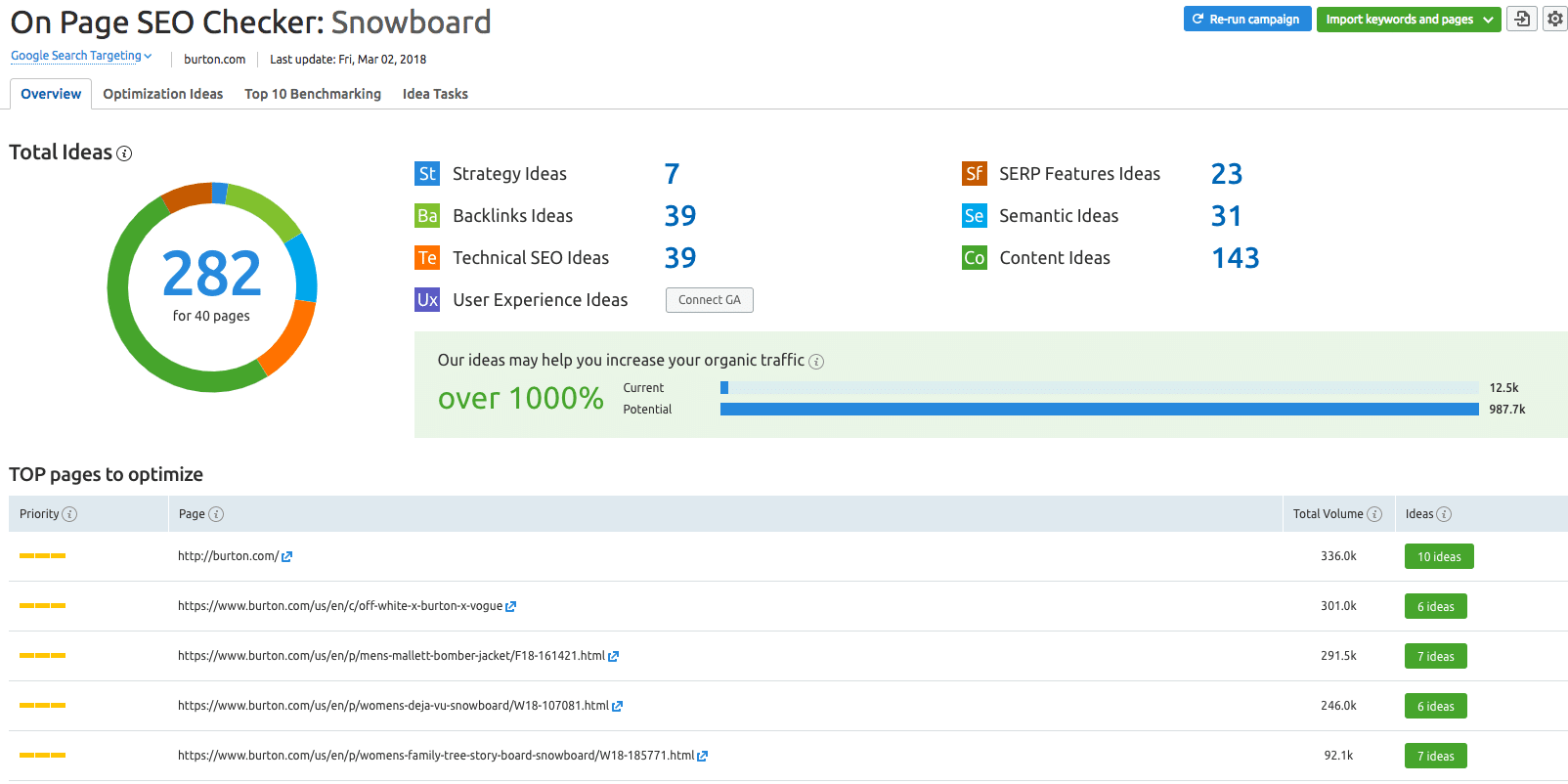
Source : semrush
Using the tool requires configuration, but once this is done and the search launched ends, you have: A first tab called “Total ideas” which displays ideas by theme:
- Strategy ;
- Backlinks;
- SEO techniques;
- User experience (UX);
- Serp Features Ideas;
- Semantics;
- Contents.
The second tab presents you with optimization ideas:
- The different pages and the configured keywords;
- The search volume for each keyword;
- The priority scale between 1 and 3 at the level of each page
4.3.3. Backlink
SEMrush offers you the essentials to properly manage all the links on your website:
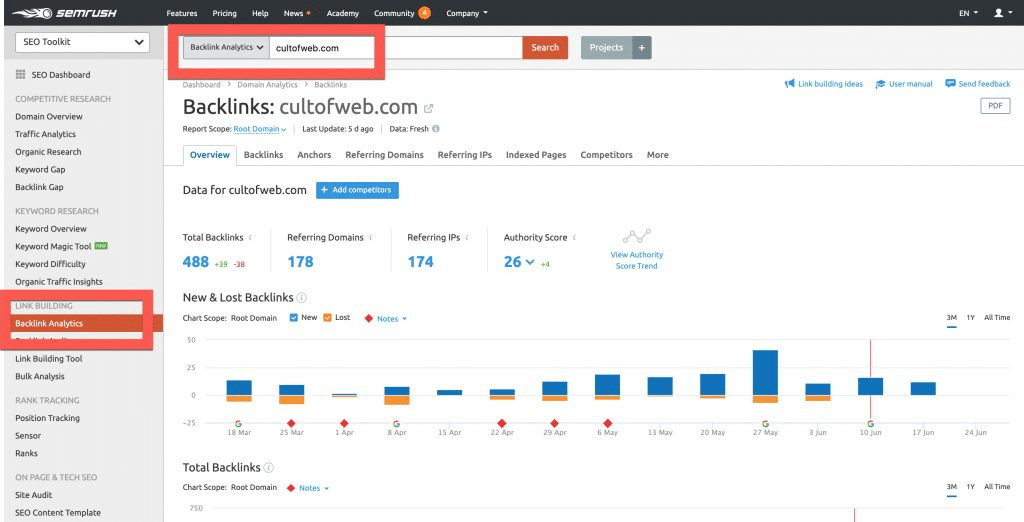
Source : cult of web
You must fill:
- The brand name;
- The domain category;
- The target countries;
- Pre-operations parameters;
- Integrations.
Then launch the audit of a website and wait for the analysis to be completed. Once completed, you will be able to see the different results of the analysis which displays, among other things:
- The toxicity score of your site;
- The domains that send traffic to your site;
- The number of backlinks analyzed (examined backlinks, backlinks you should delete, blank backlinks and backlinks to disavow);
- A graph showing the toxicity of your site’s domains;
- Shortcut buttons to delete and disavow your toxic backlinks;
- The anchoring of good and bad links.
Topic research and the web alliance opinion
SEMrush’s topic research feature allows you to find ideas for content to write based on the analysis of your competitors’ results.
It gives you:
- Titles;
- Questions ;
- Related keywords.
The web alliance notice works in the same way as the topic search, but is rather based on information provided by the analysis of requests from Internet users.
SEMRush also offers other SEO features such as the SEO content template and the SEO writing assistant which aim to make your content optimized for SEO.
4.4. The Ahrefs tool Ahrefs
is a great leader among SEO tools that allows you to:
- Analyze your backlinks;
- To audit your website;
- To build links;
- To search for keywords;
- Obtain ideas for content;
- Analyze your site’s competition.
To use Ahrefs, you must first create your account and pay for the subscription or first try it for 1 week at the price of $7.
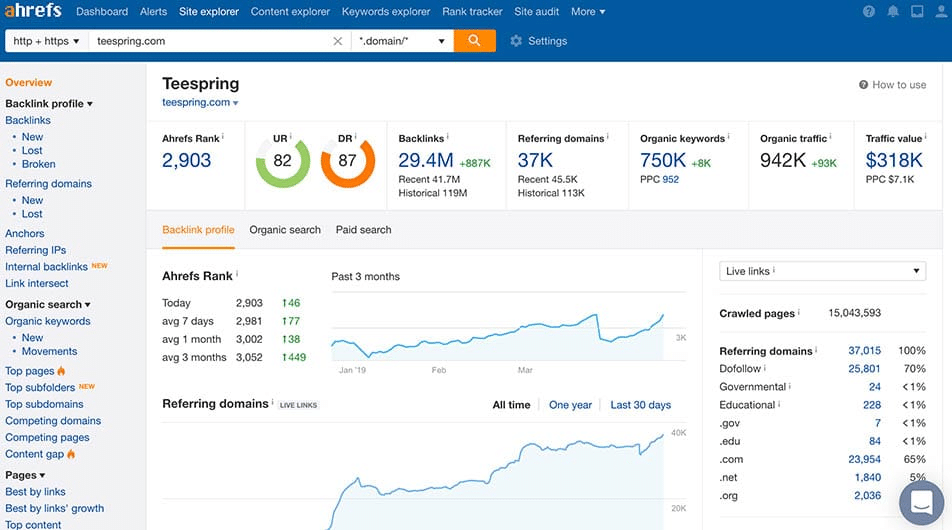
source : Ahrefs
You can then create your account, associate your site and use the various features to improve your site.
Thus, exploration of the site will allow you to seek and erase the bad incoming links or those which are suspect
You will also be able to analyze the texts of anchors to optimize the links and better place them. The site explorer tool gives you access to two reports through which you can get an idea of the content you can create.
The Places Keyword Research tool allows you to find all the traffic that can come from a keyword. This tool displays several elements such as:
- The level of difficulty;
- The search volume;
- The number of clicks;
- The cost per click;
- The average number of searches for the keyword;
- The best performing variants of the keyword analyzed.
All of these will give you an idea of what content you can create for more impact.
Thanks to all this feature set, you are sure to create quality content that will be appreciated by your target audience.
But beyond these, you can also track your site’s performance and get ideas for improvement.
These are the tools that are important to use when setting up KPIs for your SEO strategy.
Chapter 5: Good practices to improve your SEO performance
Here, I give you some good practices to better manage the optimization of your site:
5.1. Choose long content Long
content is one that reaches or exceeds approximately 2000 words. However, the length can also be determined by the type of content to be published.
Indeed, contrary to what you can imagine, long content has several advantages.
Not only do they interest readers, but they are also rewarded by search engines.
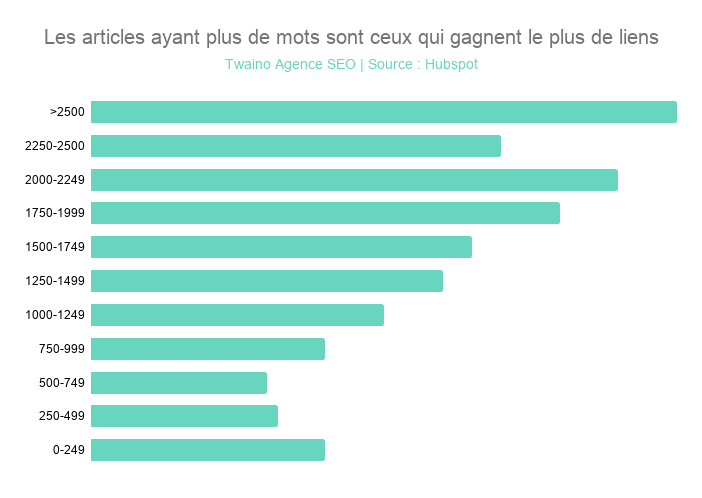
This is particularly proven by the technique of upmanship which makes a positive return on the adoption of long-format content. These types of content act on the site by increasing, for example:
- The average time spent on a site;
- Ranking in the SERPs;
- Etc.
5.2. Improve your site
‘s loading speed Loading speed is a very important criterion in measuring your SEO performance.
Indeed, a good loading speed is necessary because it is the first impression that any user who arrives on your site receives.
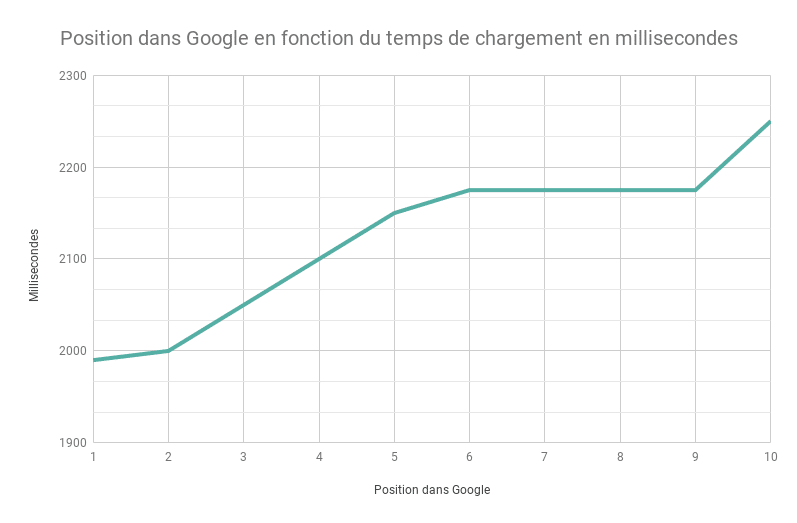
It demonstrates a good user experience. You must therefore know the loading speed of your website in order to optimize it.
5.3. Correctly define your meta tag
Still called meta description data, the meta tag is an HTML type tag found at the beginning of the HTML page.
This tag provides information about the page to browsers and search engines. It is important in your SEO strategy since it allows you to generate traffic.
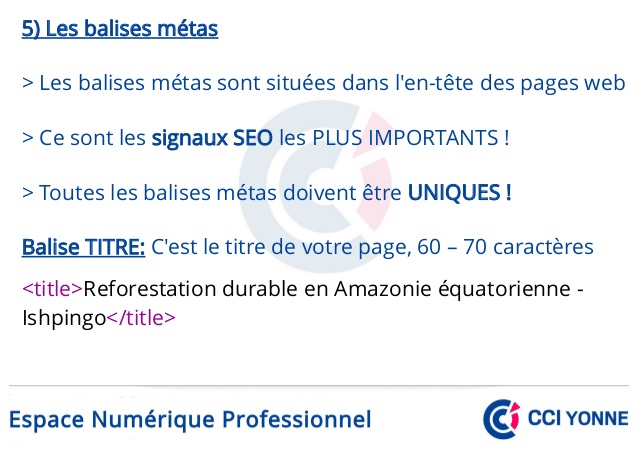
source : slideshare
Indeed, if it is well written, it informs the search engine and Internet users of the content of a web page, thus encouraging Internet users to click on a link.
To write a meta tag well, it is important that you know that:
- This tag must not exceed 160 characters;
- It is better to write sentences as meta description than to choose words or expressions;
- It is important to diversify your meta descriptions for each of your different pages.
5.5. Make a good internal link.
Internal links connect two pages of the same site. They are placed in content located on your site and allow you to redirect Internet users to other content or pages also located on the same site.
These links facilitate navigation between the different pages of a website.
In terms of referencing, they can be very useful since they facilitate, among other things:
- The exploration of your site by search engines;
- The decrease in your bounce rate;
- The sharing of popularity between a more visited page and a less visited page.
Used wisely and sparingly, internal links can affect SEO performance in a variety of ways.

For these different reasons, you should rightly structure your internal links with rich, quality content that is appreciated by Internet users.
Content creation will allow you to organize your site by categories and themes. This way, you will be able to classify the articles or videos afterwards.
Also, be sure to insert your link in the most interesting parts of the text by anchoring it in a relevant word or phrase.
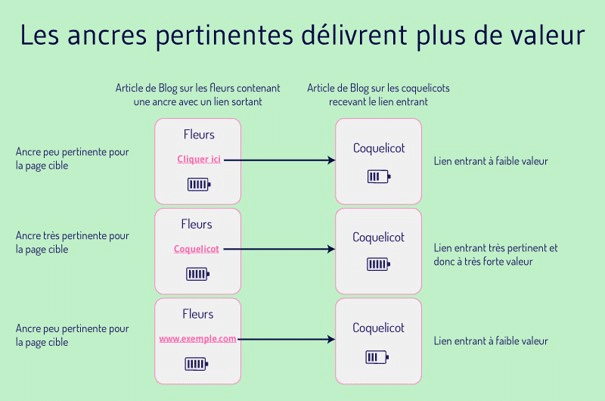
For example if the keyword of the landing page is: “SEO”, you can anchor your link to this word placed in the content you have created or choose to anchor it to a variant of this word such as: “SEO organic »
5.6. Avoid exploration errors
As you can imagine, the inaccessibility of your website would be a hindrance to its referencing. Even if you have a better SEO strategy and at some point your site is no longer accessible to search engines or Internet users, you risk losing big.
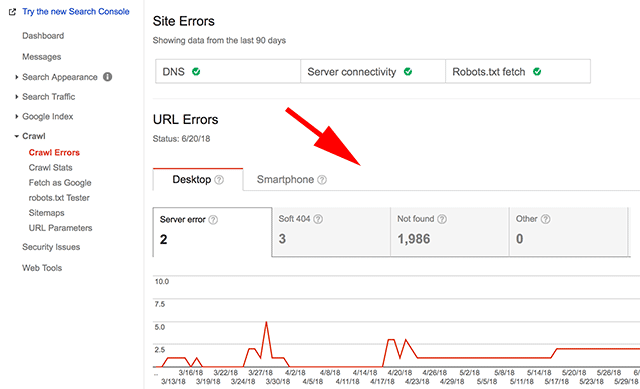
source : searcheengineroundtable
It is therefore important to take steps to prevent this.
The errors of exploration of your site can come from several causes and among these you can note:
- Server problems;
- 404 errors;
- An incorrectly entered URL address;
- Poor Meta tag optimization;
- Duplicate content;
- Poorly done indexing;
- A site enough. slow to load.
Either way, you should ensure that the information collected at this level is always positive and if you notice any warnings you should address them.
In summary
Key performance indicators allow you to monitor the achievement of the objectives that you define. There are a number of them and you will therefore not fail to find the ones you need to monitor the achievement of your various objectives.
In this article, you had the opportunity to discover most of these key performance indicators that concern the world of marketing.
Likewise, know exactly which tools to use to easily measure your performance.
If there are any KPIs or tools that I haven’t mentioned, please share them with us.
See you soon !


